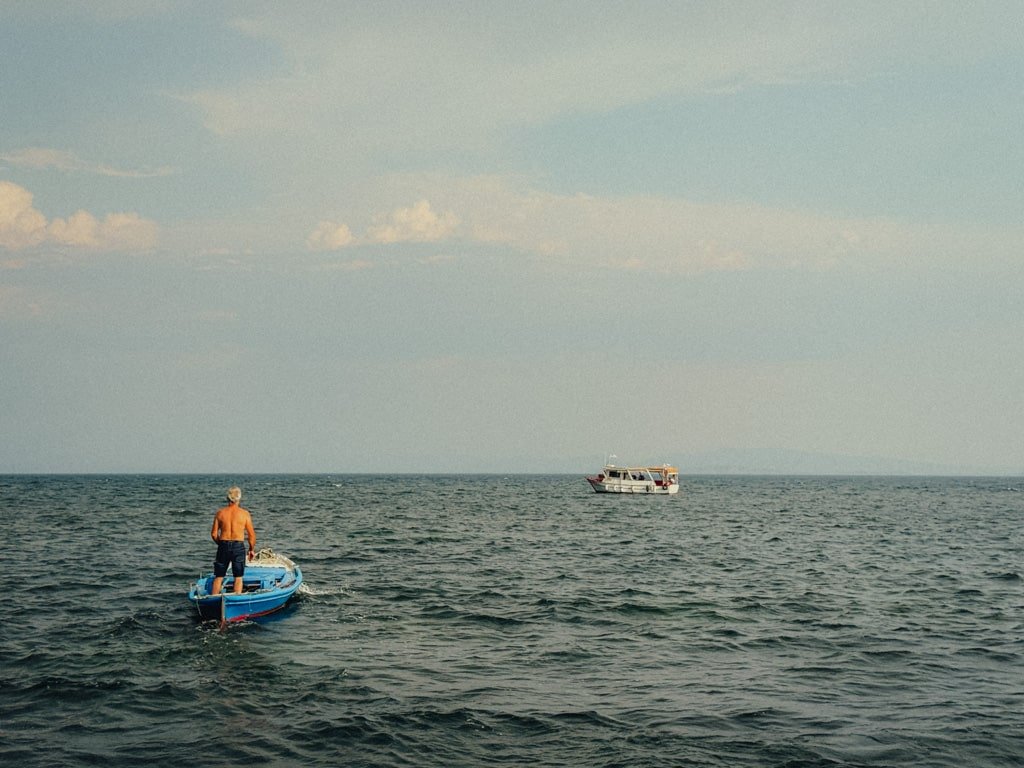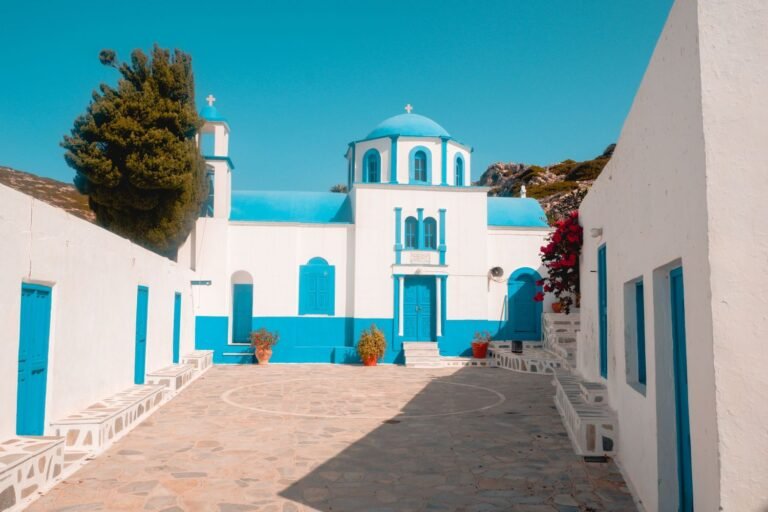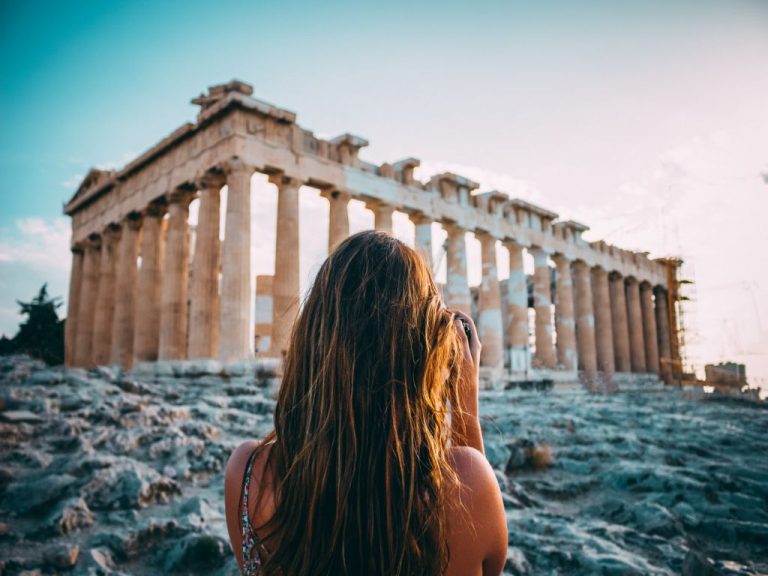This article may contain affiliate links. When you purchase something we recommend, we make a small commission. You don’t pay anything extra. 💘 For more details, check out our Terms of Use page.
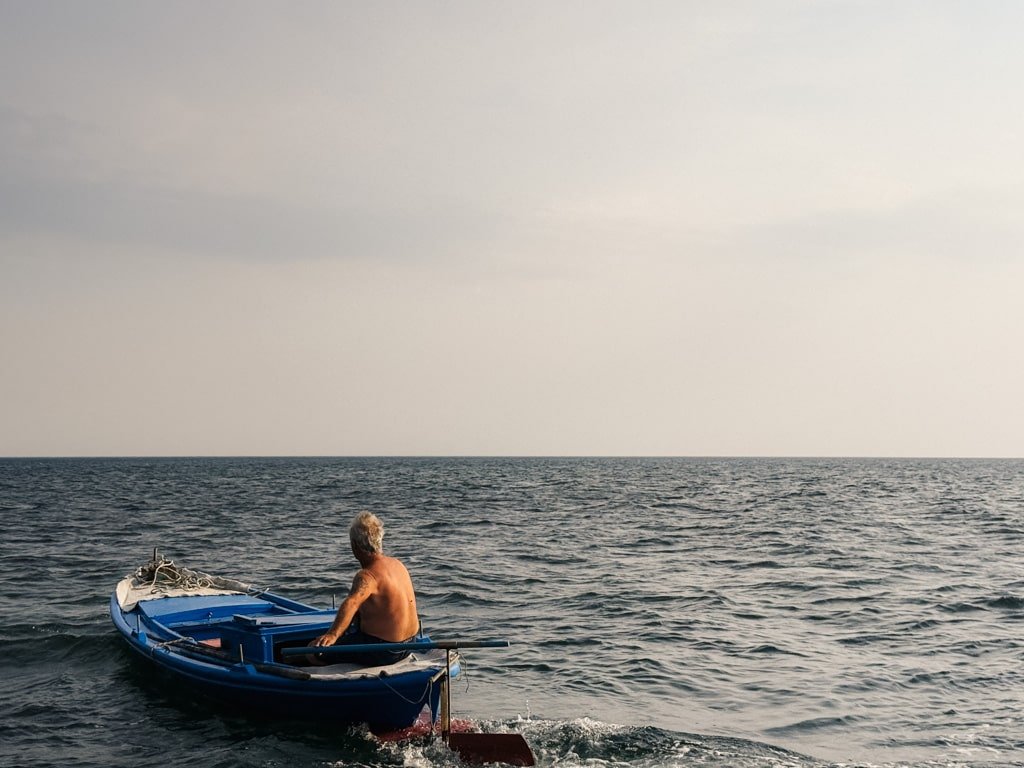
Table of Contents
ToggleHow to Get to Messolonghi
Messolonghi is located in western Central Greece, near the northern edge of the Gulf of Patras.
It sits just past the Rio Antirrio Bridge and is easy to reach by car. This makes it a great road trip destination if you’re already in Athens or Patras.
- Distance from Athens: approx. 240 km
- Driving time: around 2.5 to 3 hours, depending on traffic and stops
If you’re flying into Greece as an international visitor, Messolonghi can fit smoothly into your itinerary.
It also works well as a stopover if you’re planning to visit the Ionian Islands, such as Lefkada or Kefalonia, since it’s right along the route. It is honestly a no brainer, and a route a lot more people should entertain.
Pro tip: If you’re mapping out a longer road trip, Messolonghi pairs well with other lesser-known destinations in Central Greece and road trip destinations.
I use and compare prices for car rentals, with Discovercars.com. It is a giant rental and comparison site on the market and it has a lot of perks that make sense if you travel often.
Once you head to Discover Cars, you’ll find an easy search engine to filter by location, dates and pick up location.
Tip: Always check a few different pick up locations when booking a rental car.
Why Messolonghi Is Called the “Holy City”
You might hear Messolonghi referred to as the “Holy City,” and that is not just a poetic phrase.
The title was officially granted by the Greek state in 1937 in memory of the city’s role during the Greek War of Independence.
For most Greeks, myself included, this part of history, is the first that comes to mind when we hear the name.
The short story includes a brutal long siege by Ottoman and Egyptian forces, during which the people made a final, and desperate attempt to escape.
Thousands died in what became known as the Exodus of Messolonghi, but their bravery and sacrifice left a lasting impact on the national consciousness.
The event also inspired many outside of Greece. One of the most well-known was the British poet Lord Byron, who had come to Messolonghi to support the revolution and died there in 1824.
Today, the city honours this history through places like the Garden of Heroes, a quiet memorial park filled with statues, busts, and pathways lined with trees. You’ll also see historic plaques and preserved gates that stand as reminders of the past. Even if you’re not a history enthusiast, there is a quiet dignity that runs through the city and the stories it carries.
Activities and things to Do in Mesolongi
Explore the City on Bike
The town of Messolonghi is extremely bike-friendly and biking has been an integral part of daily life here since at least the 1960s. It helps that the city is quite flat as well, making it easier to navigate.
Our tour was organized by Activities Messolonghi, a locally run business with great bikes and equipment, super comfortable for long rides and knowledgeable guides. We took a few hours to explore the old town and landmarks around the city, but you can just as well head with them out to the lagoon for kayaking or up the mountains for hiking and other outdoor adventures.
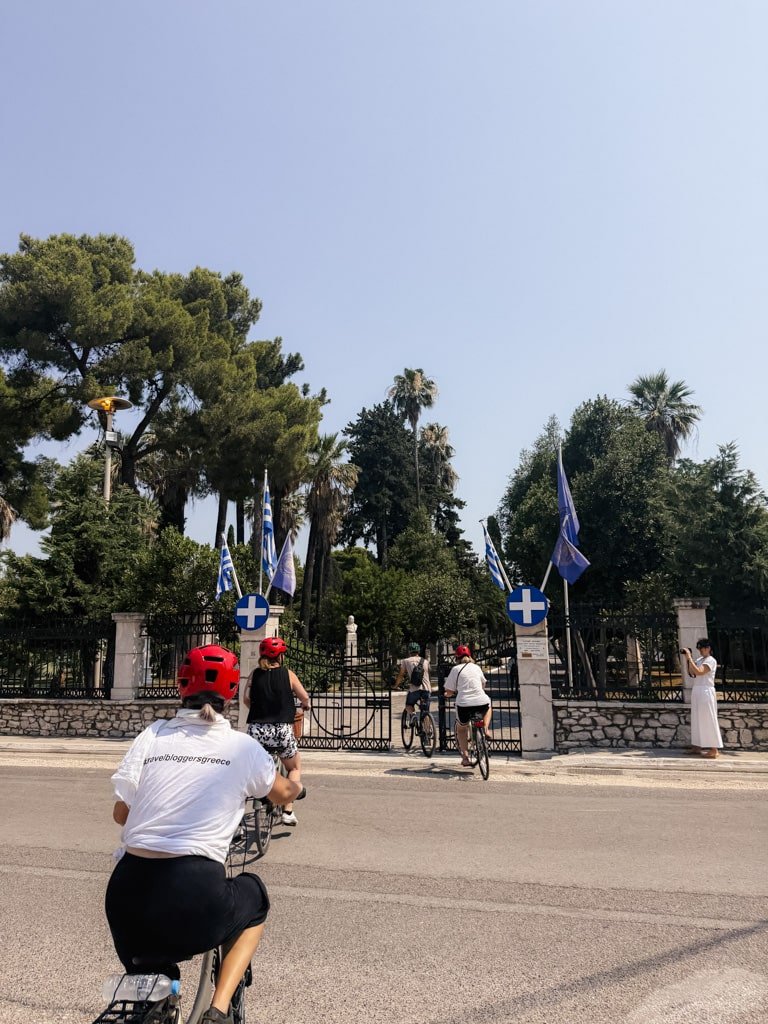
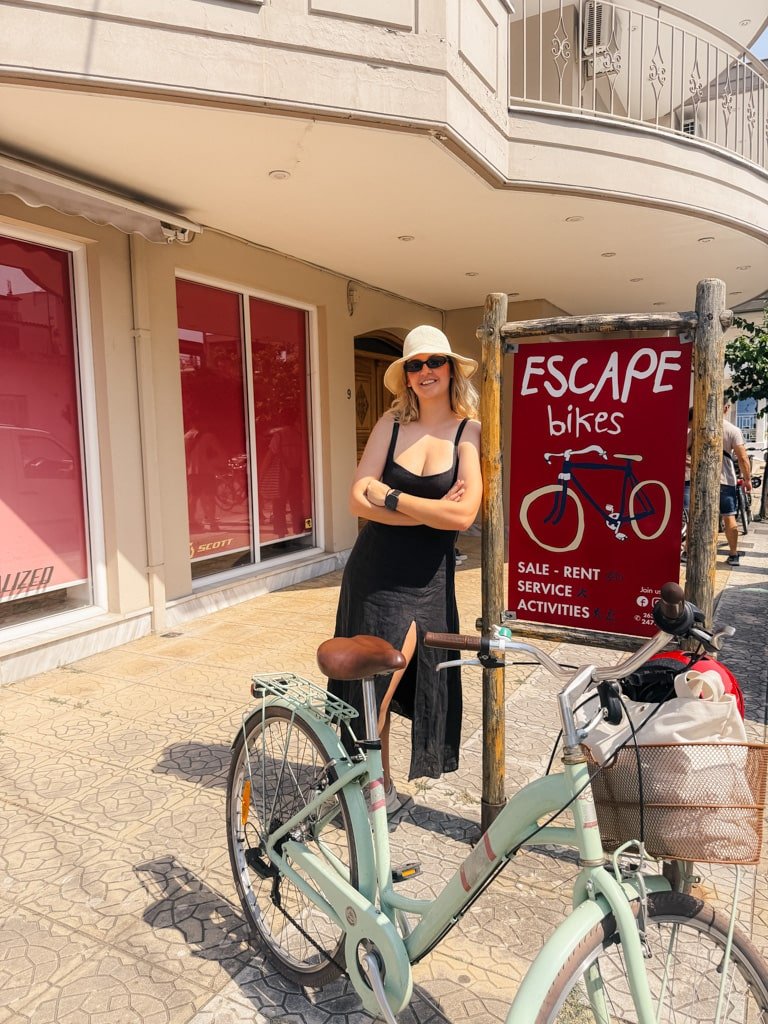
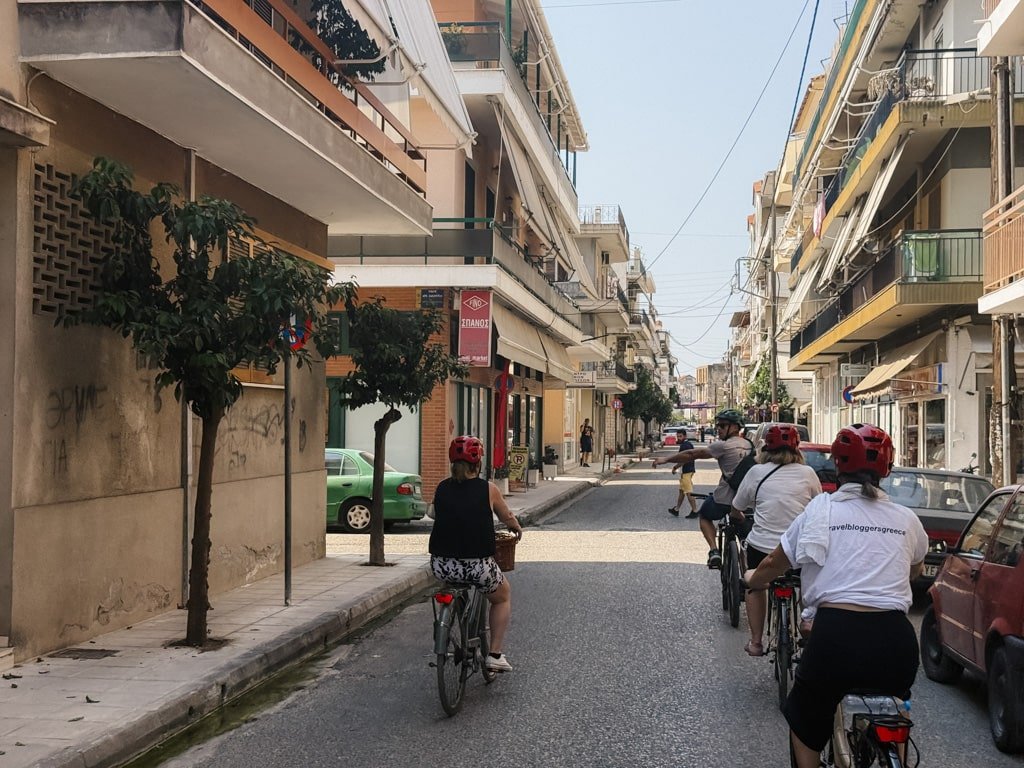
Step Inside the Trikoupis Museum
After cruising through the town on bikes, we made a stop at the Charilaos Trikoupis Museum, which is dedicated to one of the most important political figures in modern Greek history and a native of Messolonghi.
Trikoupis served as Prime Minister of Greece seven times in the late 1800s and is most famously known for the phrase “Unfortunately, we are bankrupt”, spoken during one of Greece’s early financial crises which is pictured below.
The museum is actually his family’s neoclassical mansion, and inside you’ll find a small but interesting collection of personal items, documents, and furnishings from that era.
You don’t need a long visit either, maybe 20 minutes or so. But it gives a nice sense of the town’s contribution to the country’s political history, beyond the more famous events of the Greek Revolution.
The garden out front is also a quiet place to rest your legs before continuing on.
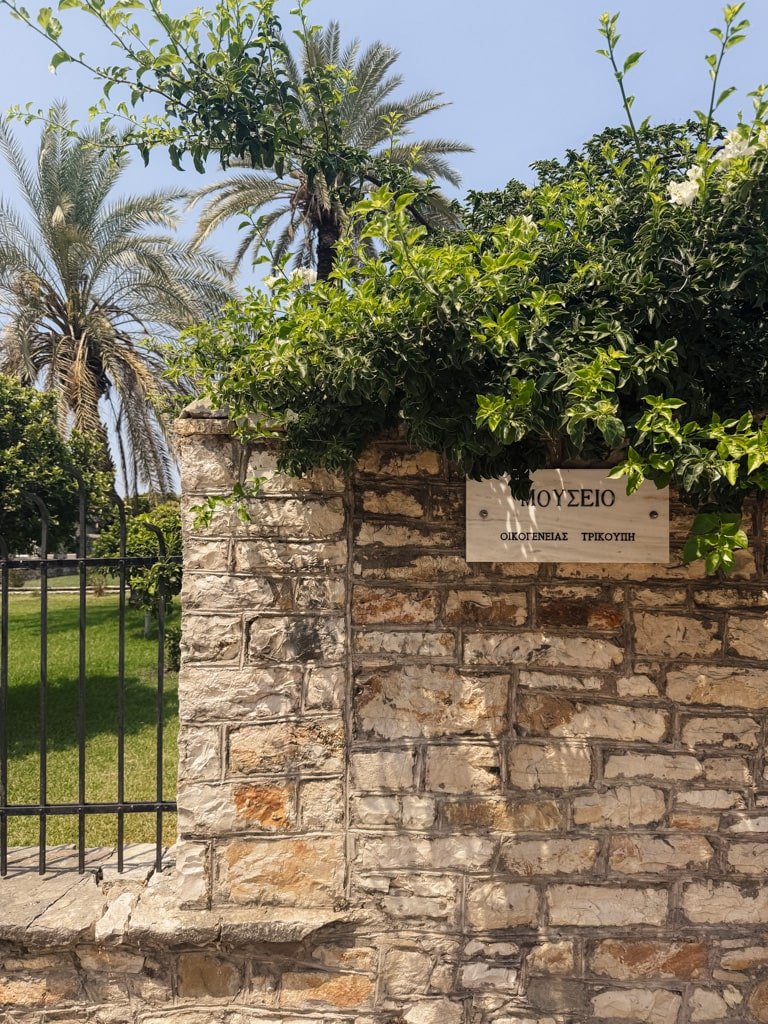
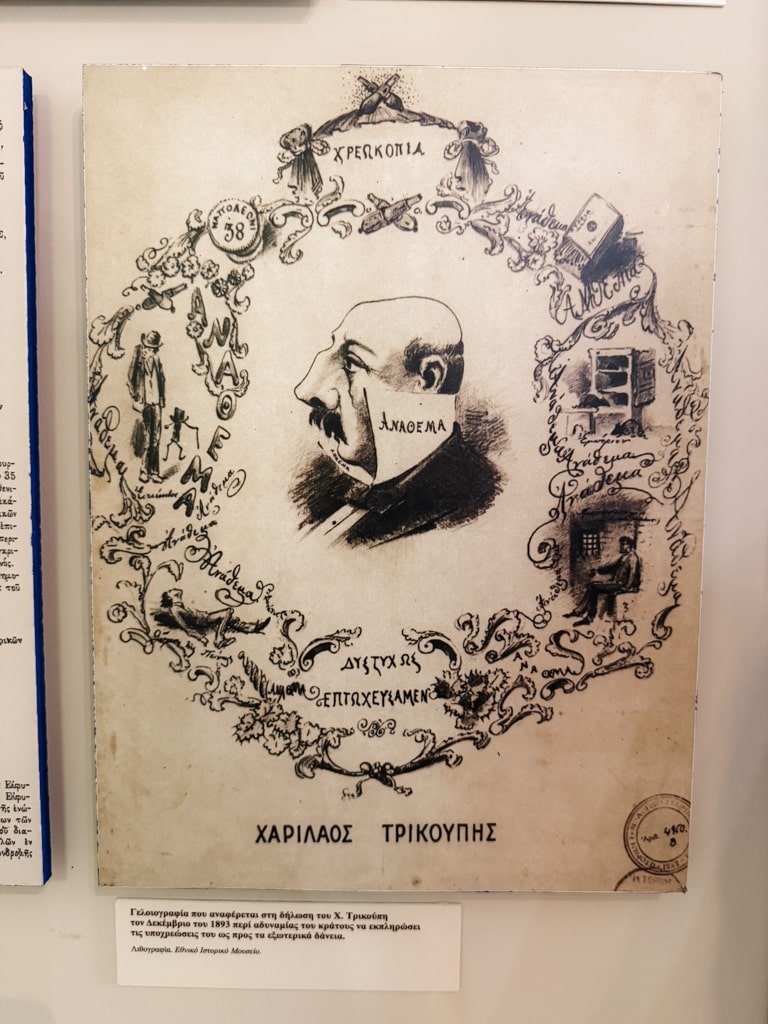
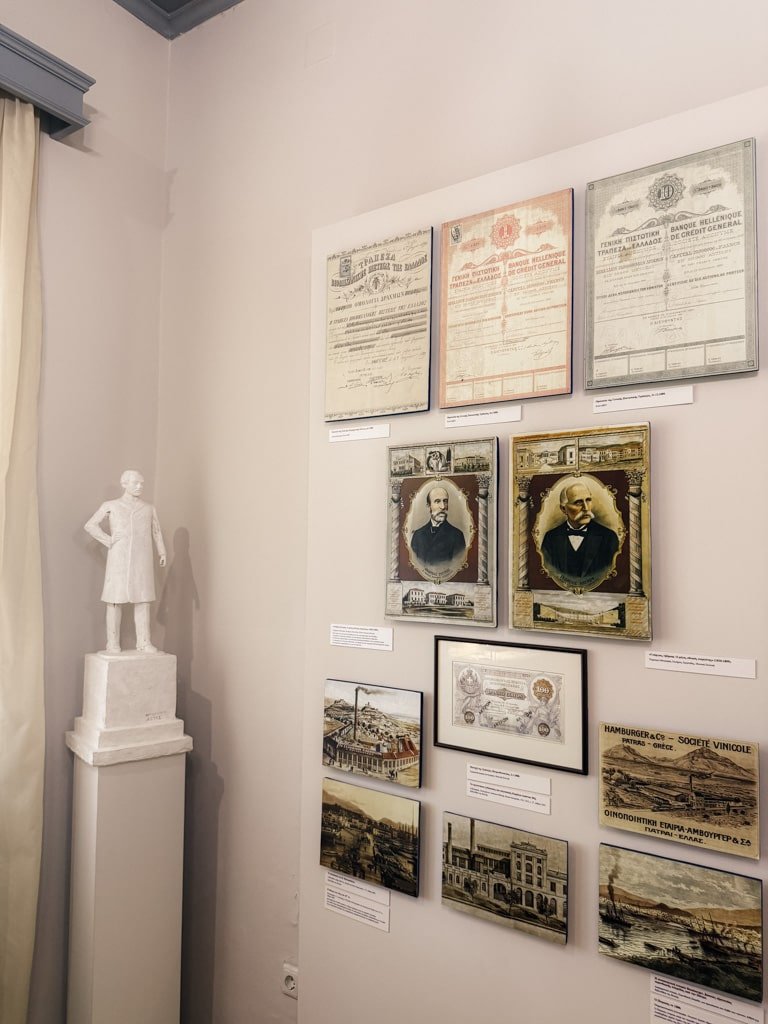
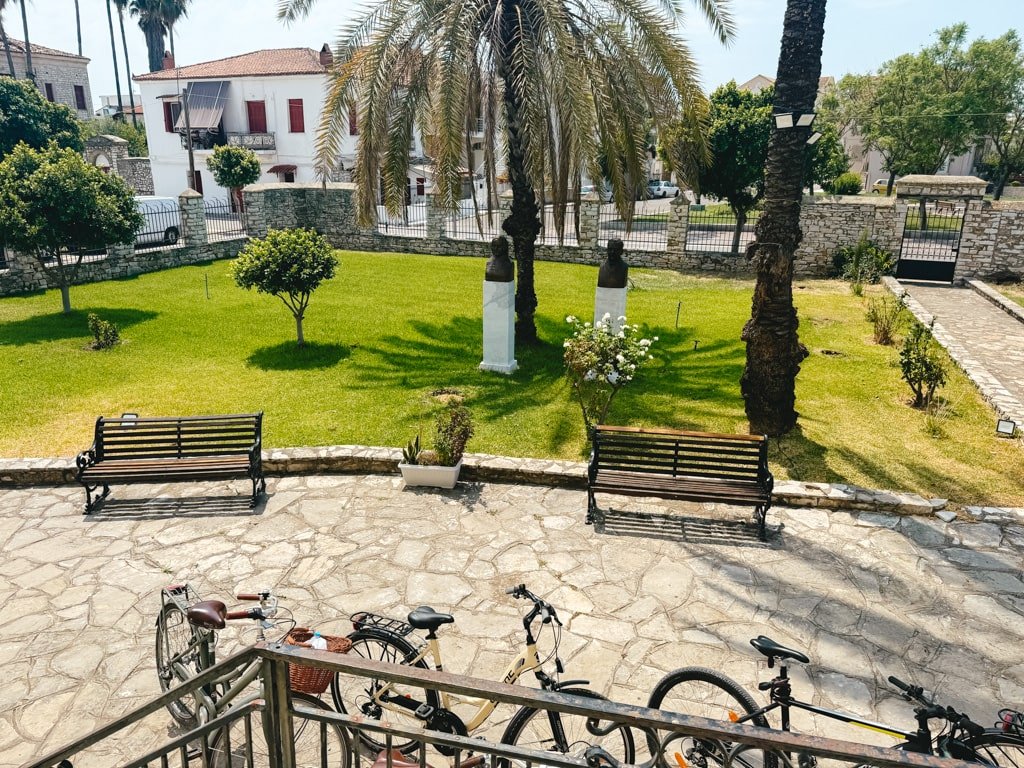
Get a Taste of Local Spirits at Trikenes
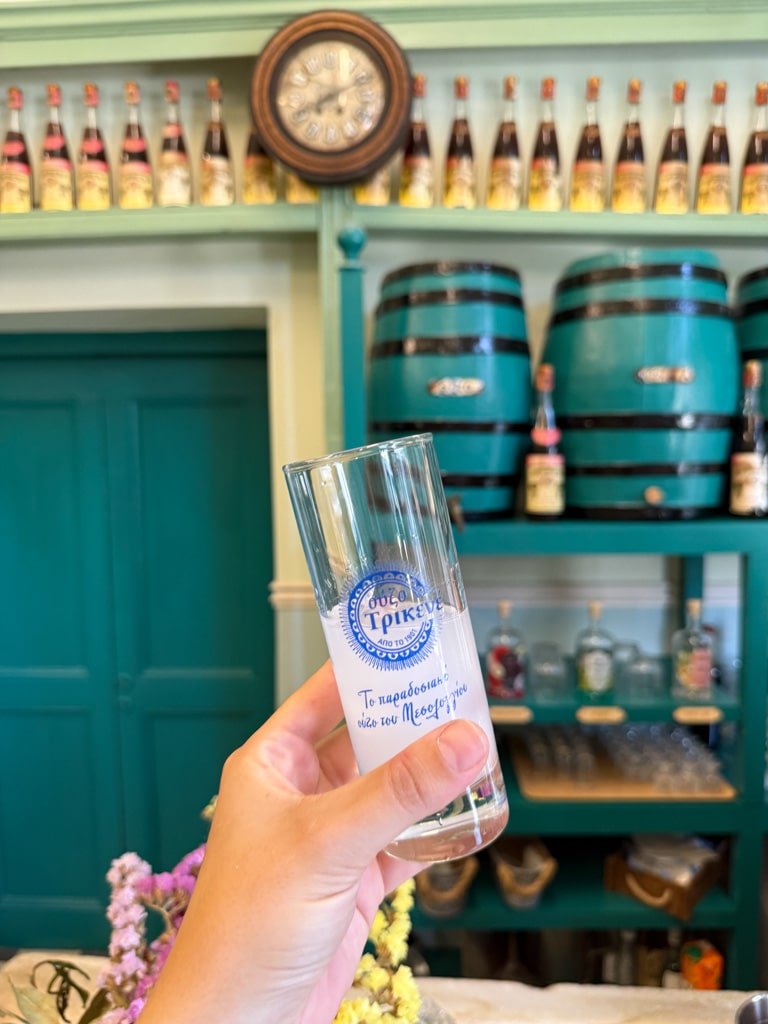
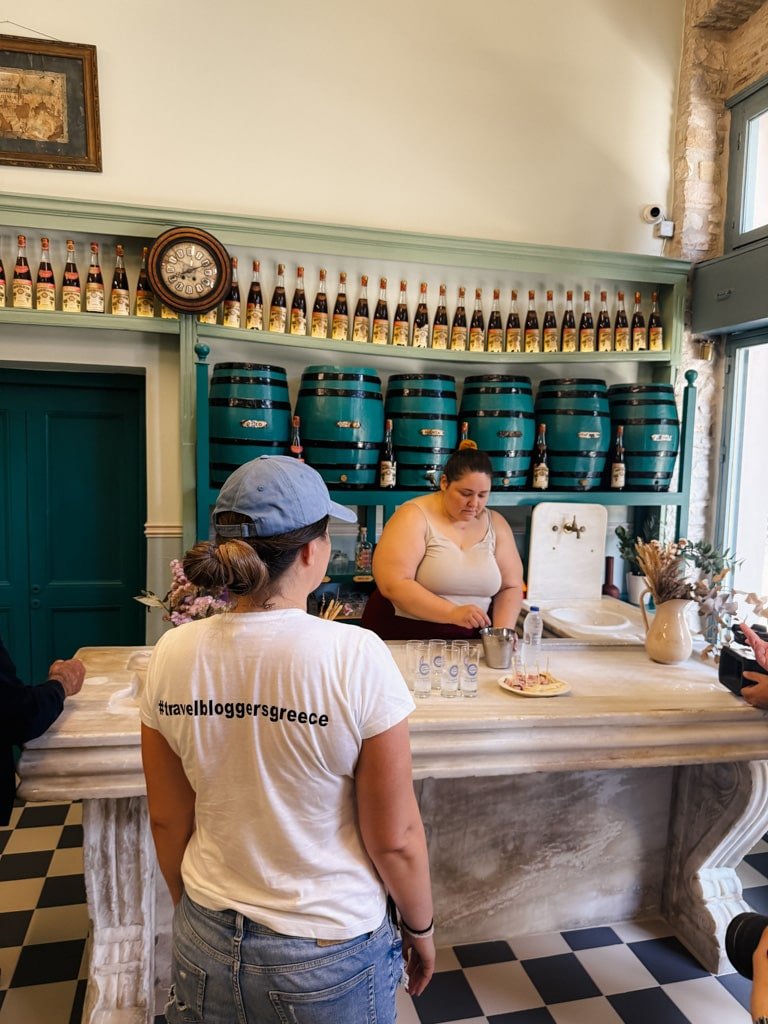
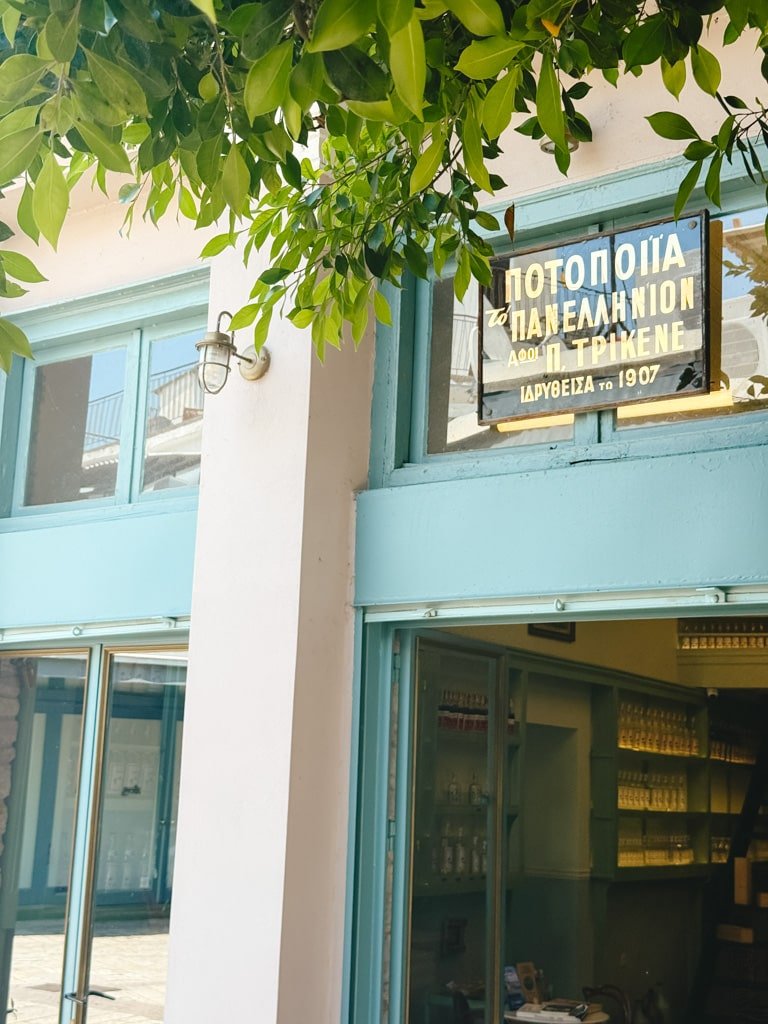
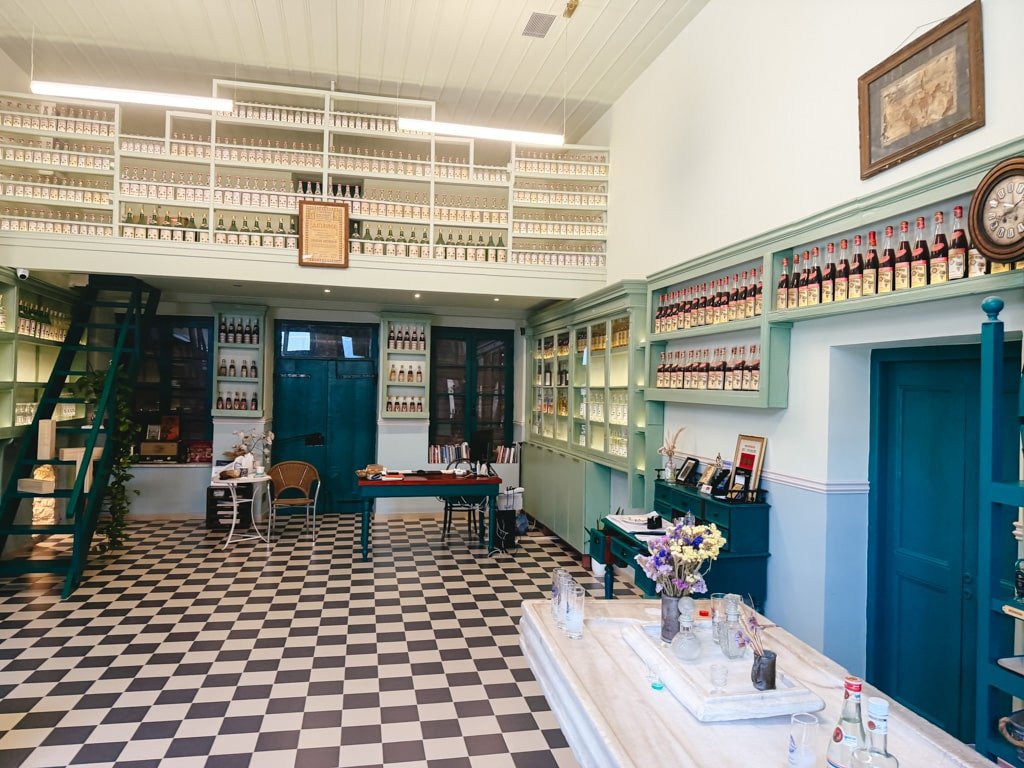
Spot Flamingos Through the Lagoon
The Messolonghi–Aitoliko lagoon is part of a protected wetland area, and if you’re lucky, you might spot its most graceful residents, the flamingos.
They’re often seen gliding across the water or standing in clusters along the shallow banks. We managed to see them up close a few times, but never quite close enough to photograph them properly, at least not in a way that would do them justice.
Still, there’s something quietly magical about spotting them in the wild, especially with the stillness of the lagoon around you.
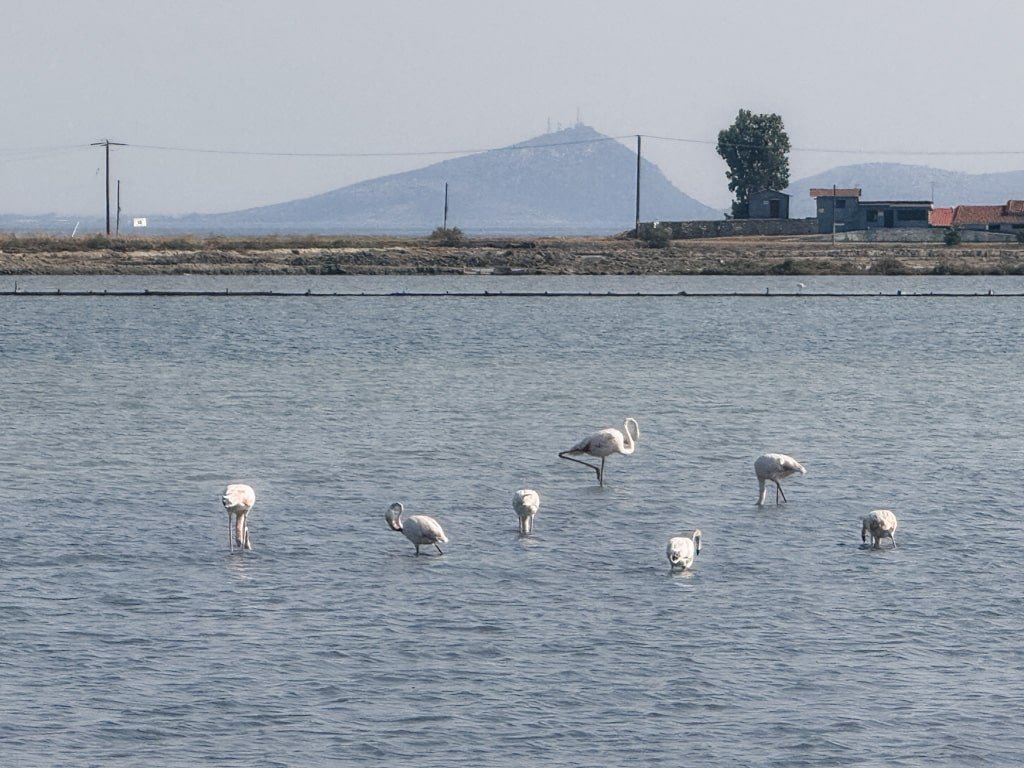
Take a Boat Through the Lagoon
One of the best ways to see Messolonghi is from the water. I sincerely believe this is an experience not to be missed, especially due to the significance the lagoon has in the ecosystem and the traditional characteristics that are present (from the boats, to the houses).
The lagoon is calm, glassy, and incredibly atmospheric especially in the late afternoon when the light gets golden and everything feels like it’s been softened by salt and time.
We joined a boat ride from Tourlida, weaving between narrow channels, stilted huts, and clusters of birds. The journey from the small port of Tourlida to the small islet took less than an hour. The depth of the lagoon for the first half an hour, ranged only from 2 to 8 meters.
The lagoon houses, called pelades, are built on wooden stilts right over the water. Some are still used for fishing, while others have been transformed into tavernas or rustic escapes. One of the things I’d love to come back for is a proper lunch in a pelada, surrounded by nothing but sea breeze and silence.
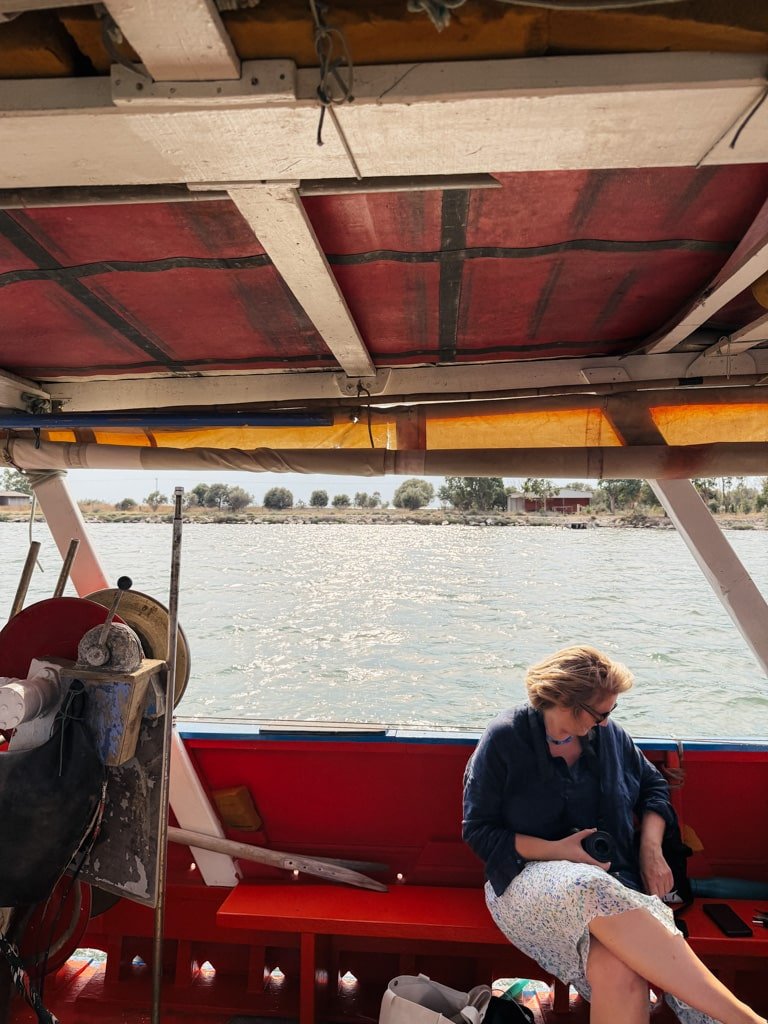
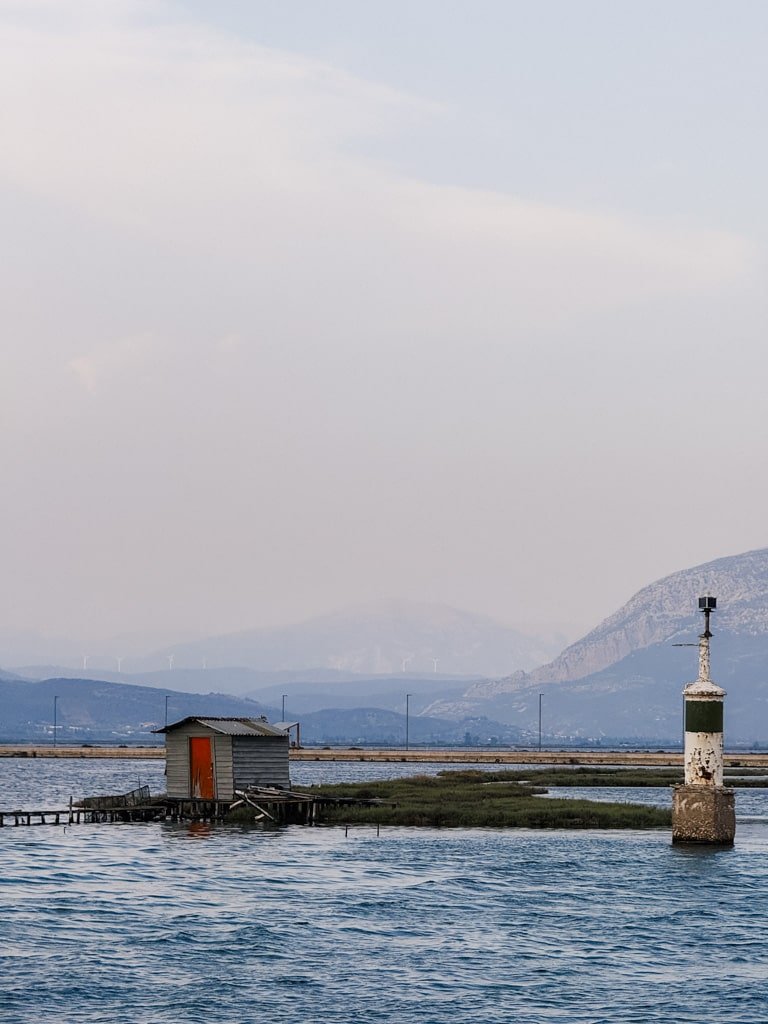
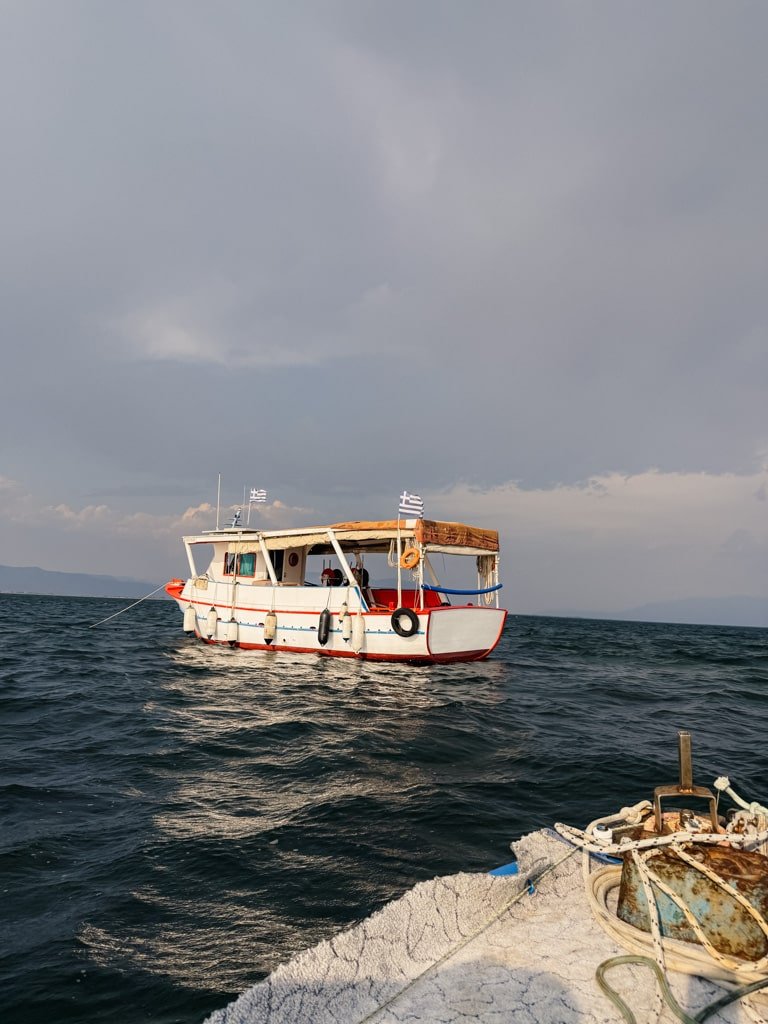
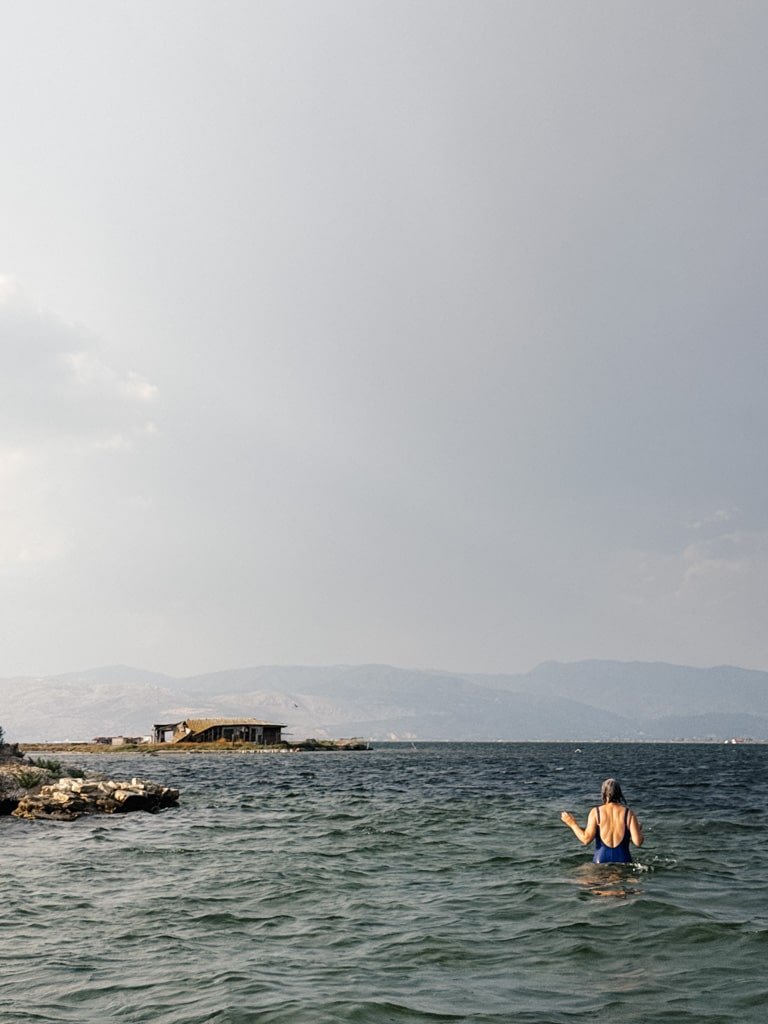
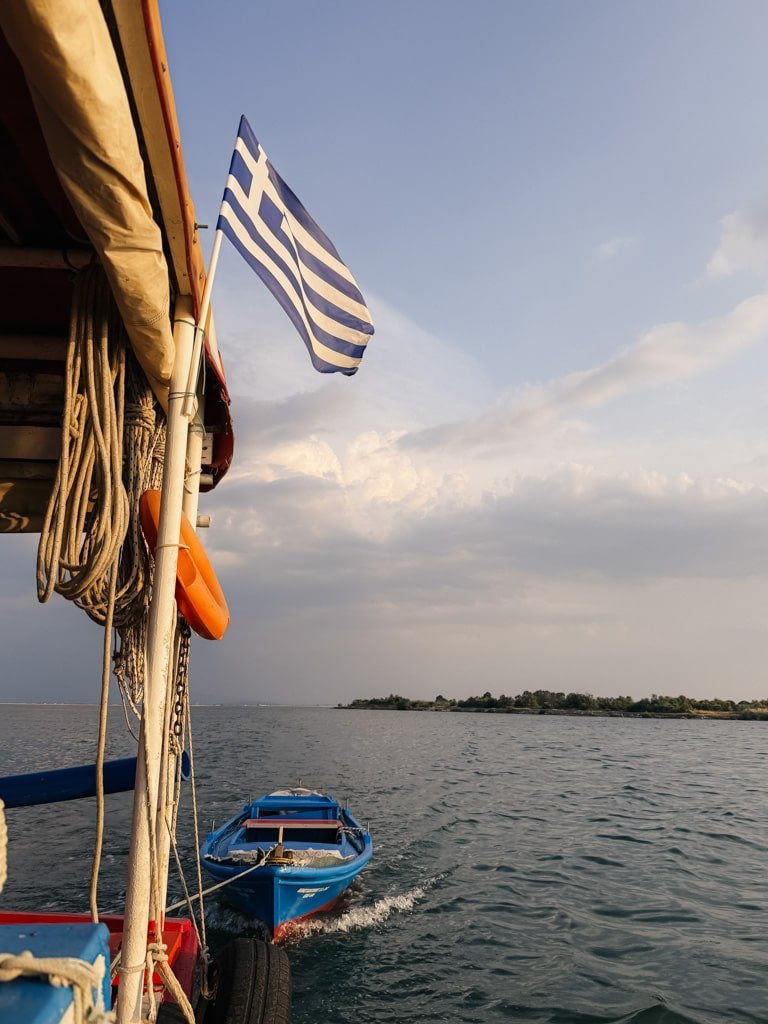
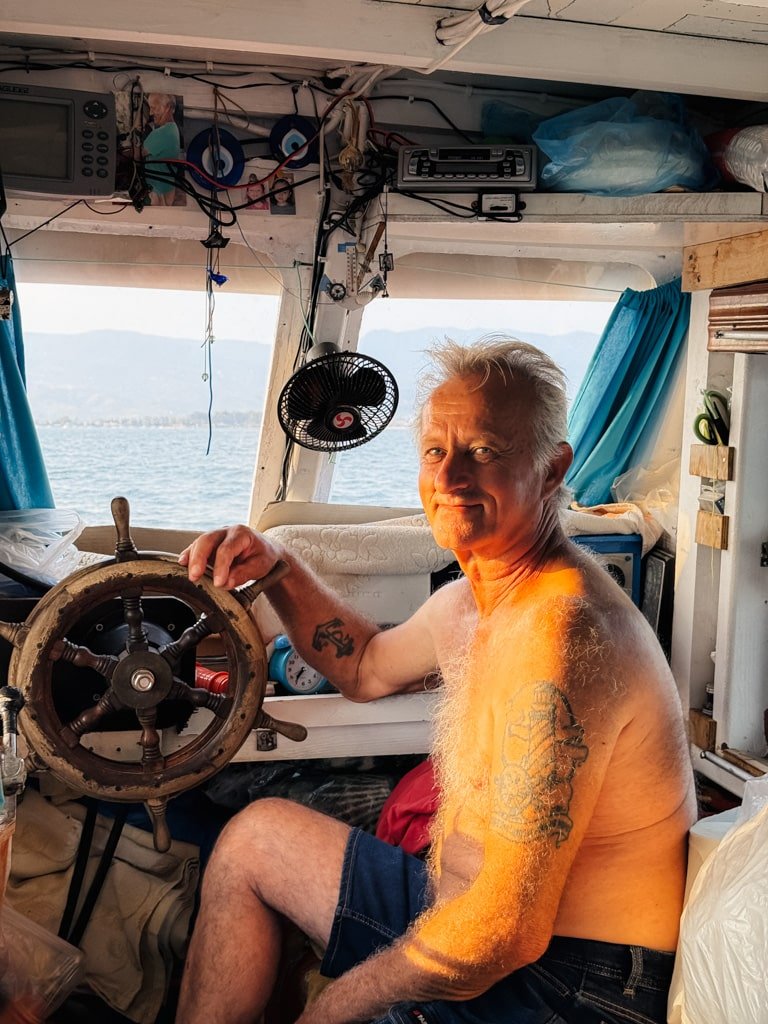
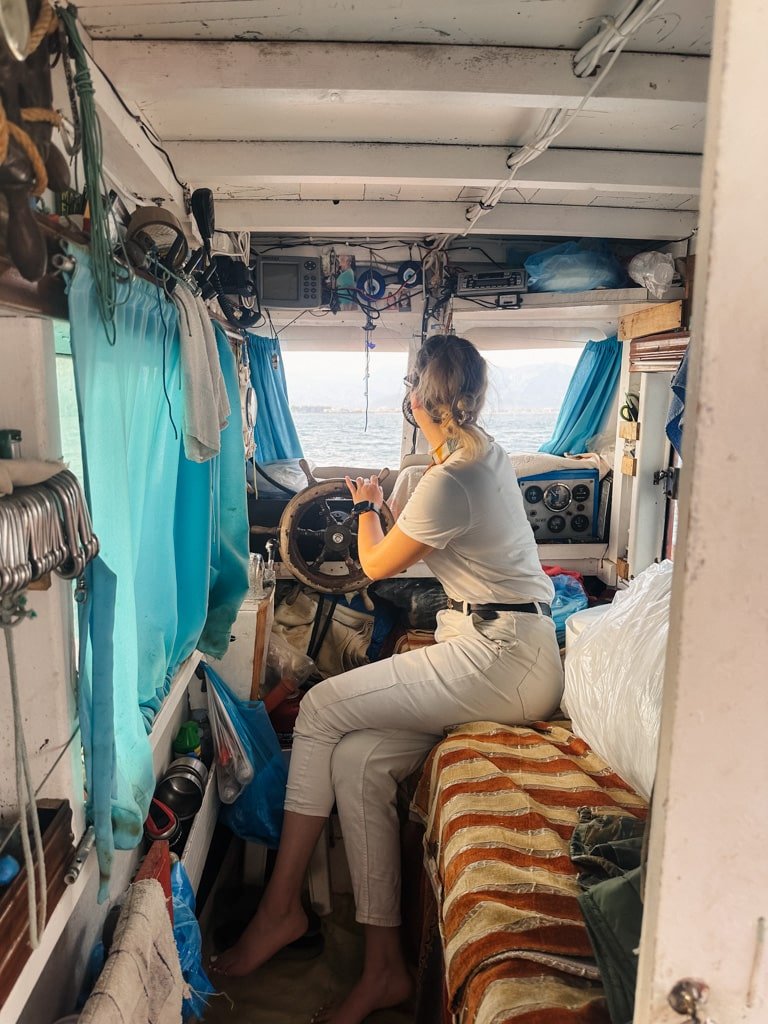
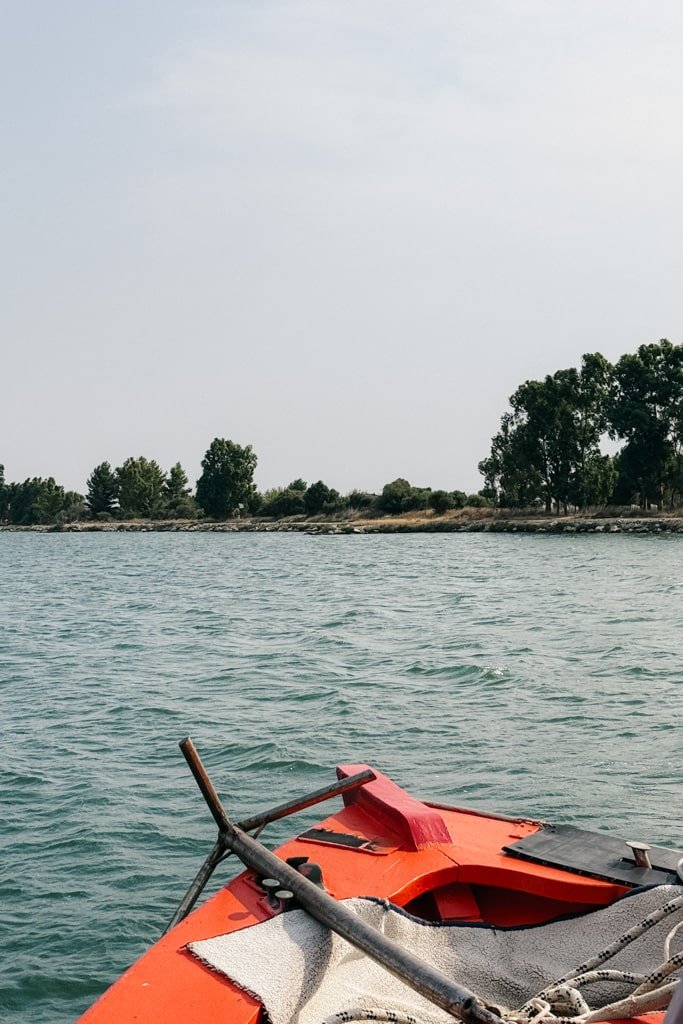
Visit the Historic Lighthouse on Vasiladi Island
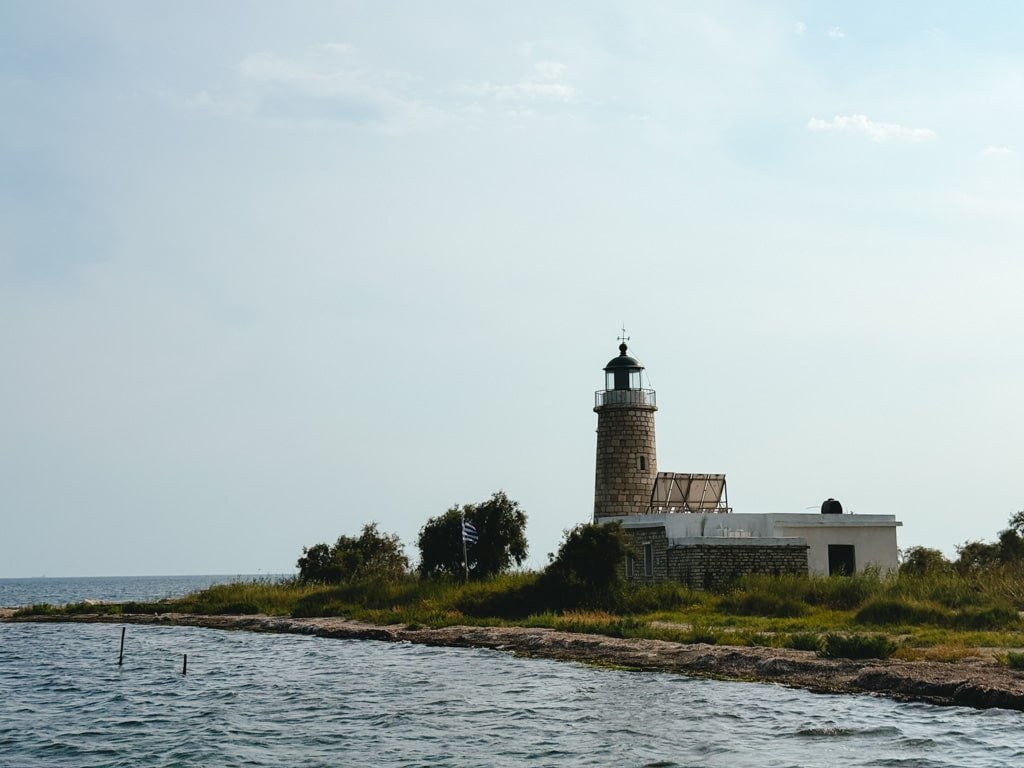
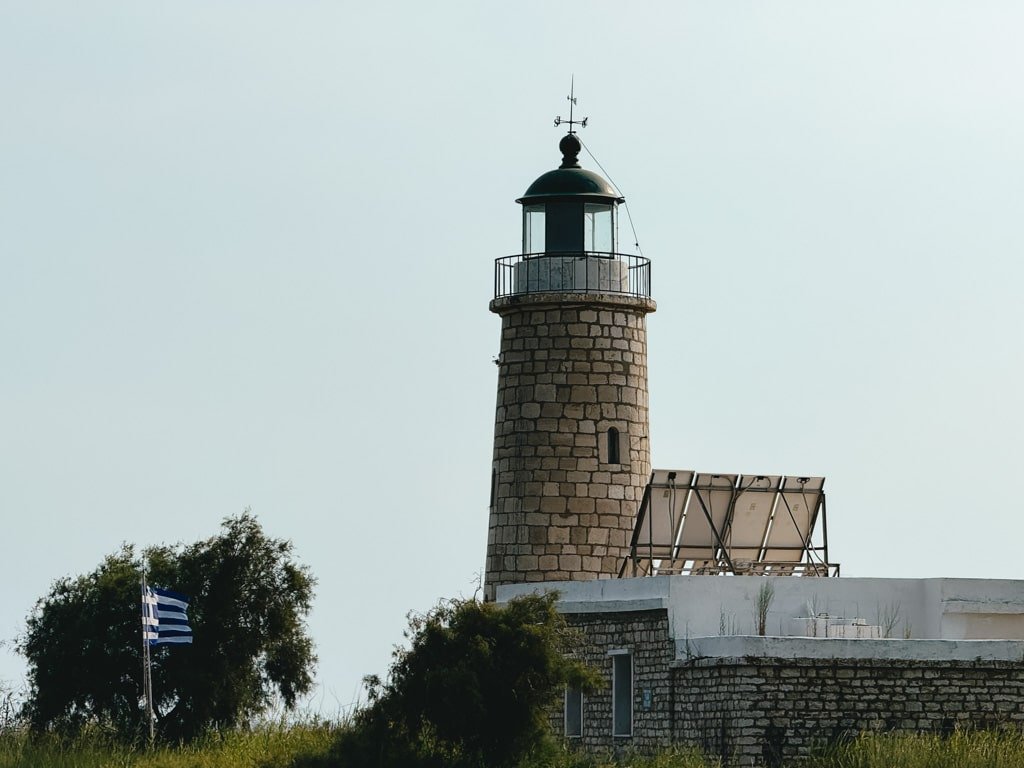
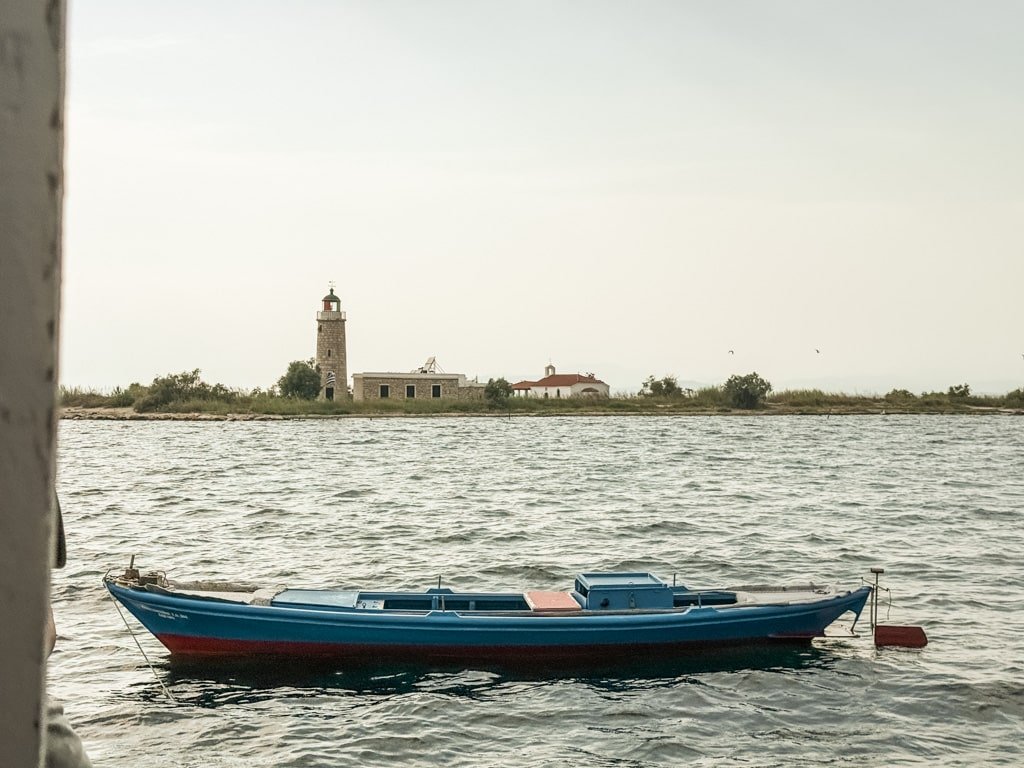
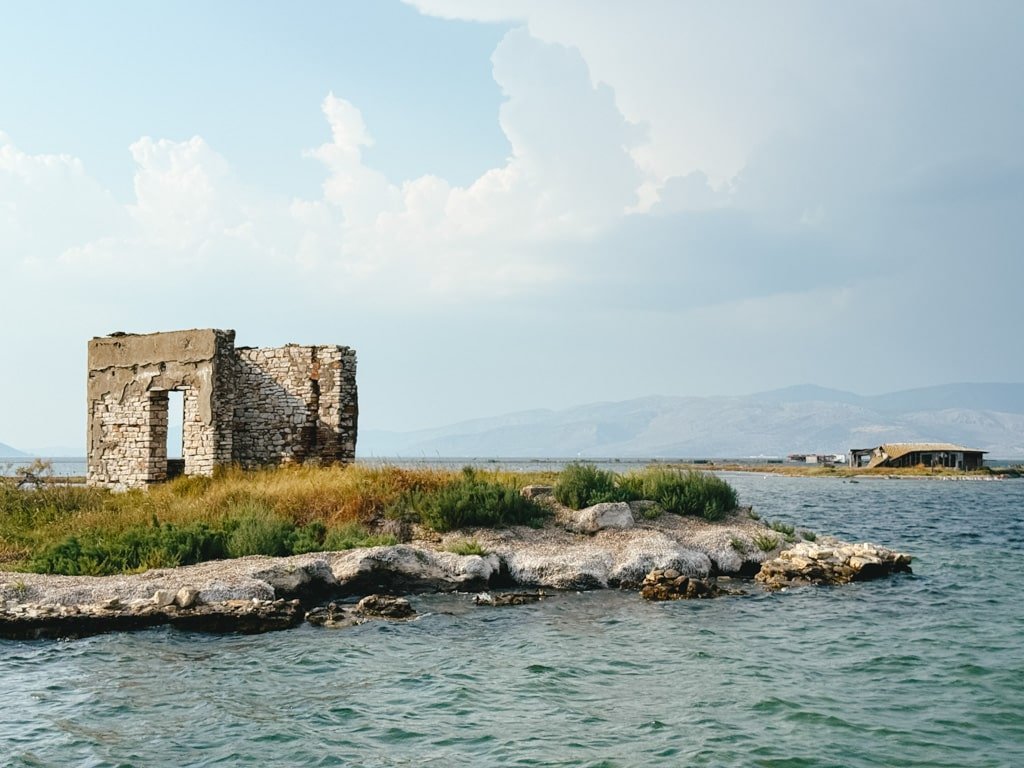
Visit the Salt Museum (Seriously, Don’t Skip It)
It’s not often I get this excited about a museum, but the Salt Museum in Tourlida honestly blew me away. Created without any public funding, it tells the story of salt not just as a product, but as part of Mesolonghi’s identity and global trade history.
The space is beautiful, the tour is personal, and the passion behind it is unforgettable. In fact, it won the 2024 European Museum of the Year award and it absolutely deserved it.
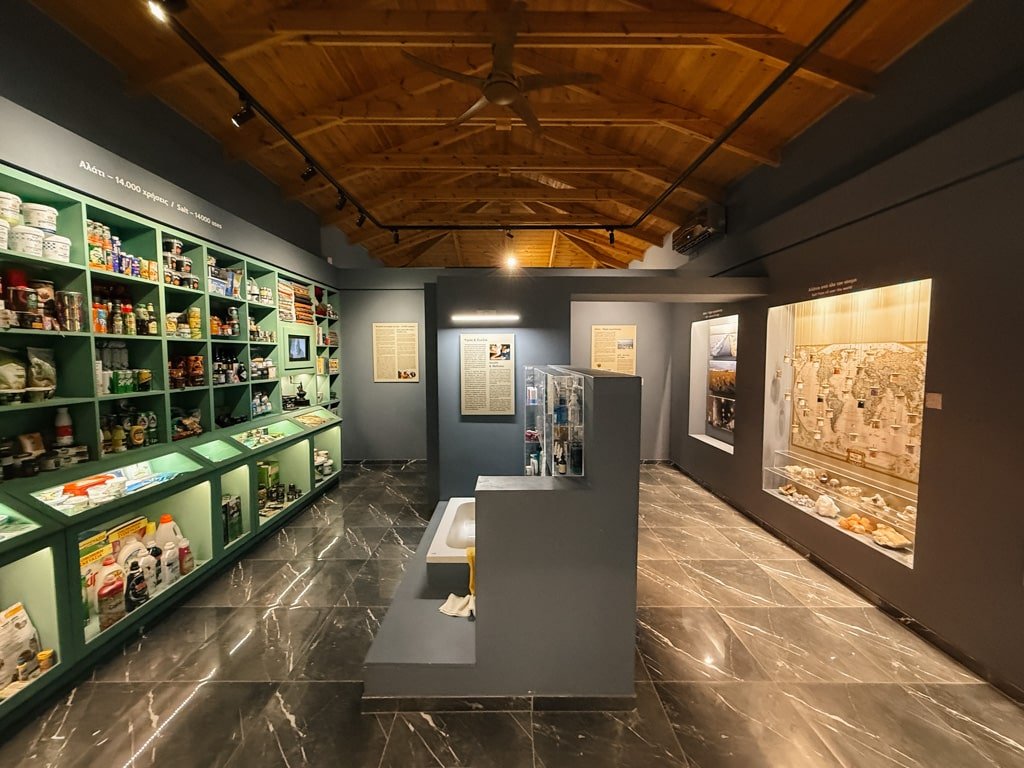
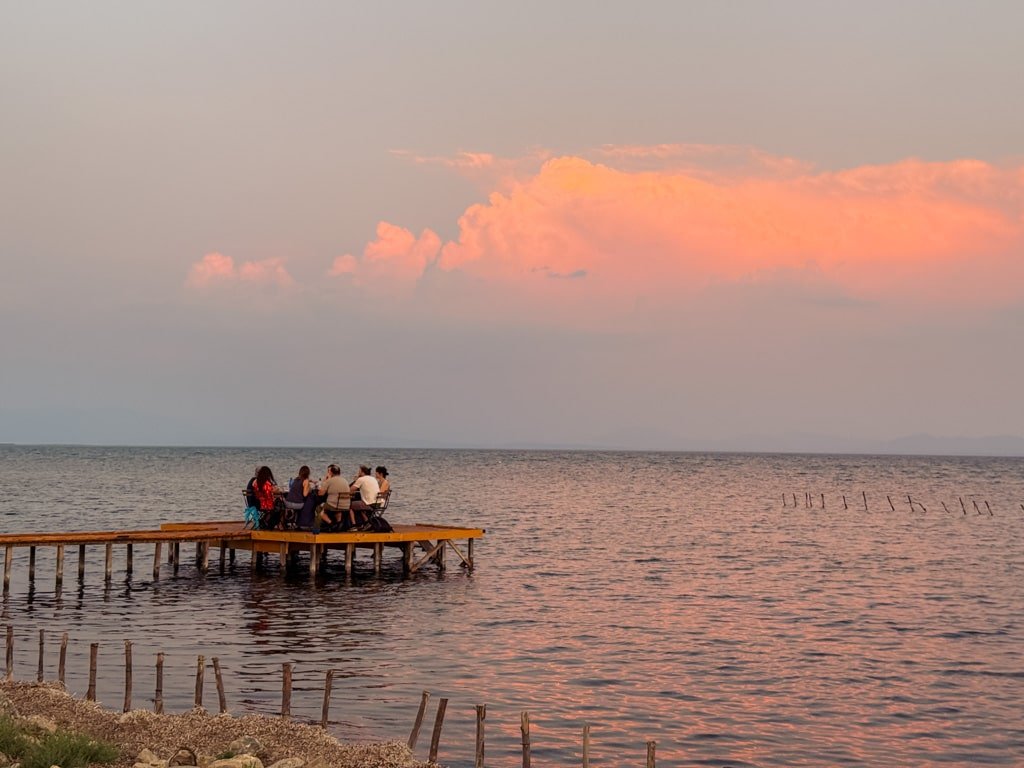
Learn About Fishing From the Mouth of a Local
If you want to understand the area and the landscape, the Fishing Museum in Aitoliko is essential. Ms. Evgenia Plexida who guided us (another of the many passionate and deeply knowledgeable locals we met) is part of a long line of local fisherman and knows the stories and history of the place.
She walked us through what life on the lagoon has been like for generations, from the rhythms of fishing seasons to the economic pressures families still face. We learned about traditional fishing techniques, and the kinds of tools people still use today, including paragadia and hand-woven baskets that were once meticulously made by women, strand by strand. It was the first time I’d heard these tools described in such detail, and honestly, I don’t think I’ll ever forget it.
The museum also explains how efforts to drain the lagoon and reroute water from a nearby dam changed the ecosystem dramatically, replacing saltwater with sweet water and damaging both fish populations and local livelihoods. You definitely come away with a deeper understanding of just how fragile and essential this balance is.
Kids would absolutely love this place. It’s filled with models, diagrams, and exhibits on lagoon animals, fishing gear, and the importance of protecting the natural environment. And the best part? It’s completely free to visit.
It’s located in Aitoliko, a small island town best appreciated when viewed from above. Zoom in and out on a map to really understand its scale and how closely life here is tied to the water. As Miss Evgenia explained, even bridge design has an impact, if it disrupts the natural flow of the water, it can block fish migration routes, cutting off a food chain that’s been in place for centuries.
This was a clear highlight of the weekend. A small space with a big story, built from pure love and local effort.
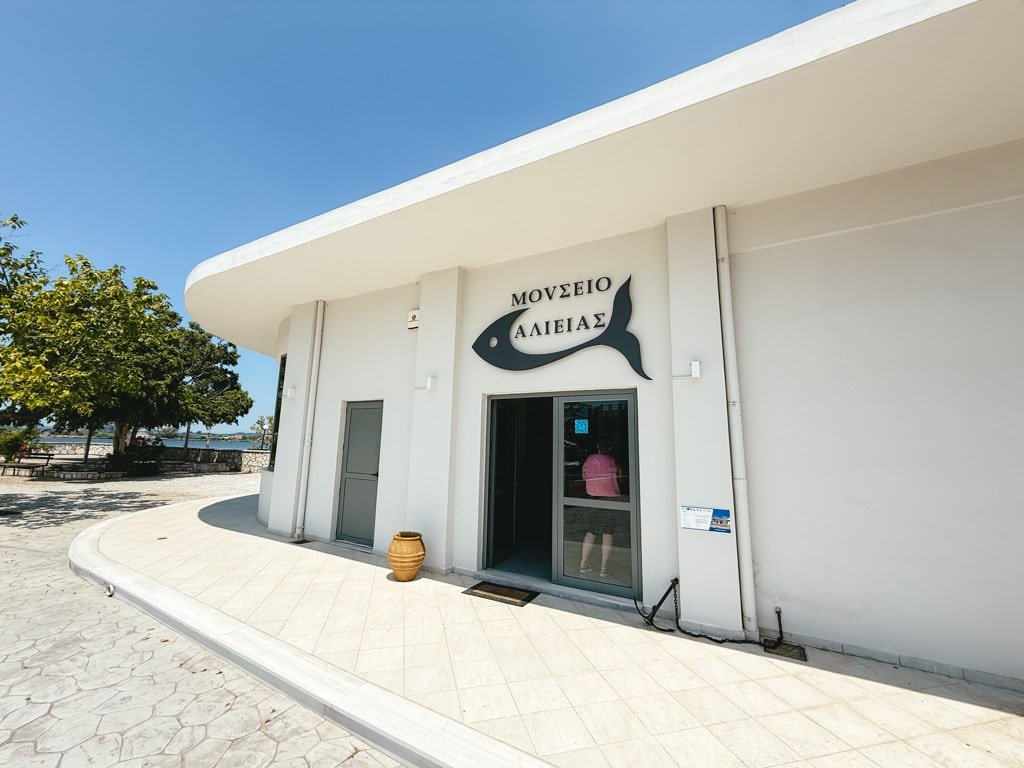
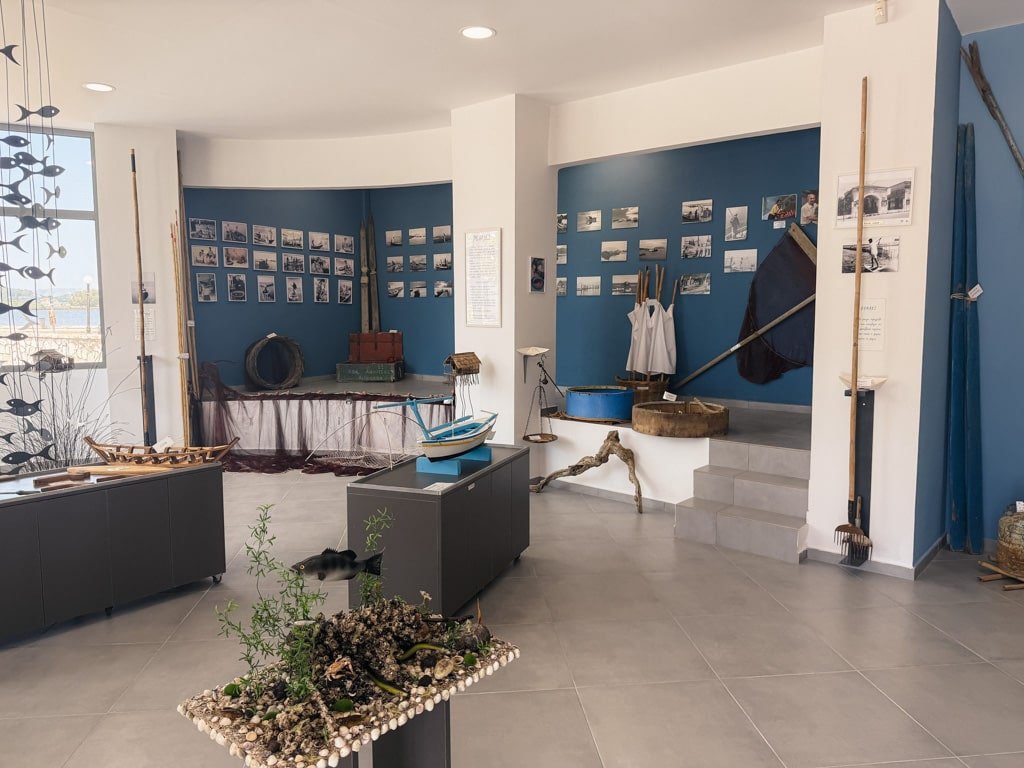
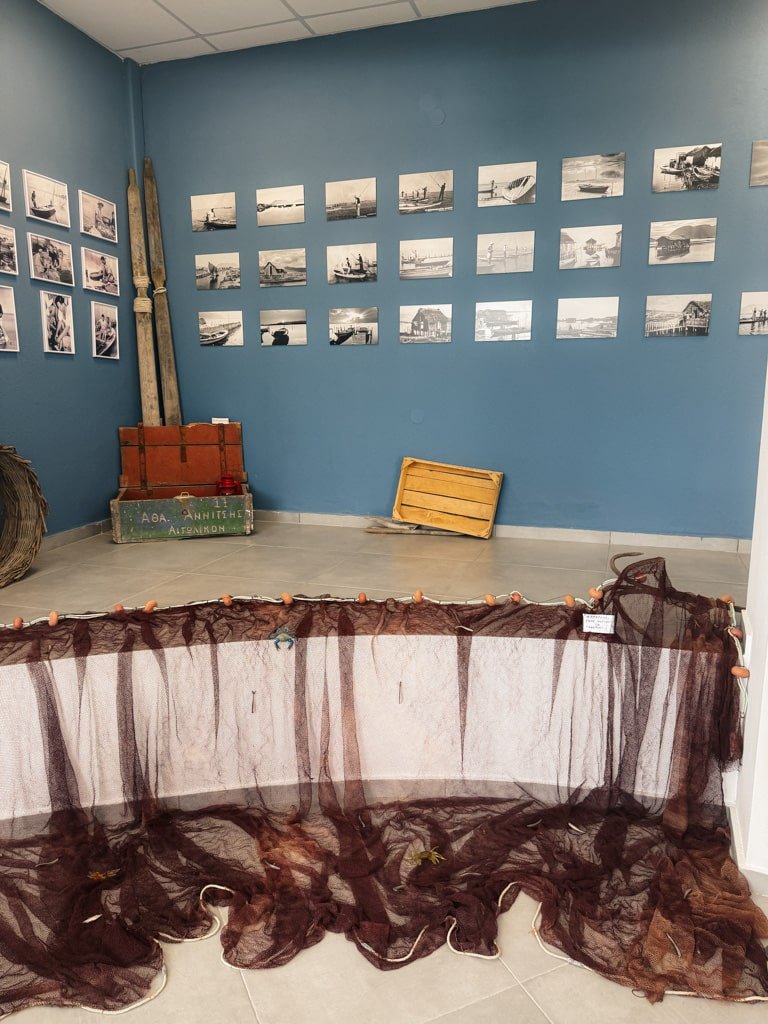
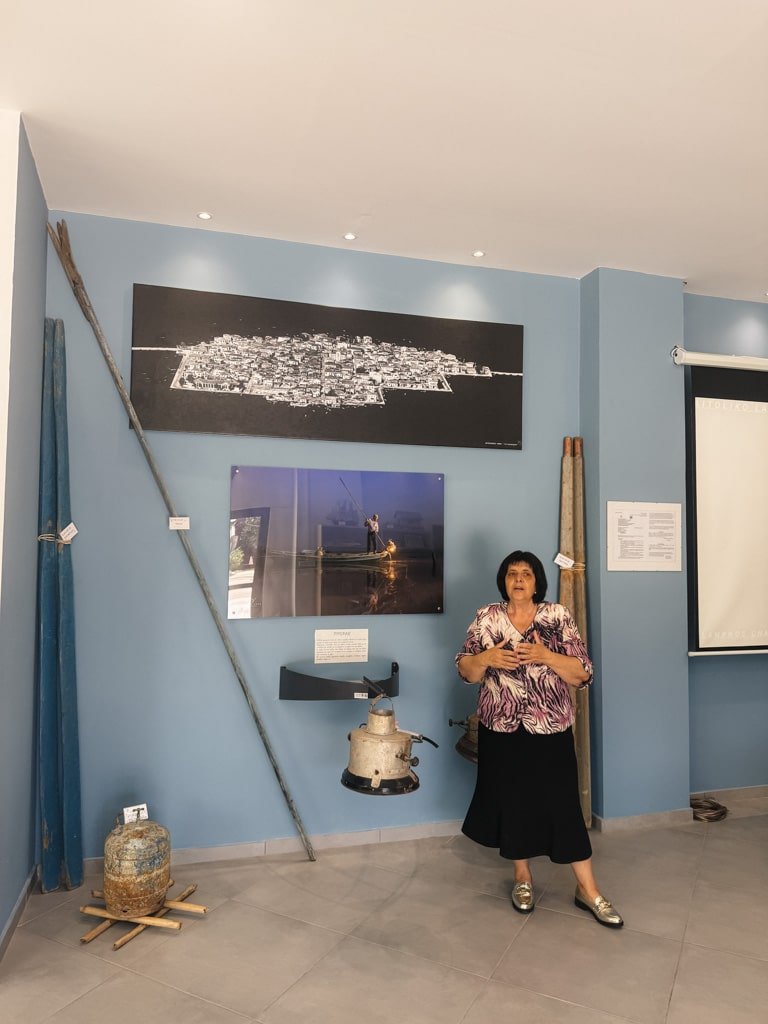
Walk Through the Garden of Heroes
No visit to Messolonghi is complete without at least a short walk through the Garden of Heroes. This peaceful park is not just a green space in the centre of town, but a deeply symbolic place, a tribute to the thousands who lost their lives during the Siege and Exodus of 1826.
Even if you’re not usually drawn to historical landmarks, this space feels different. There’s something grounding about walking past the names, statues, and tombs of both Greek revolutionaries and foreign Philhellenes, including Lord Byron, who supported the Greek struggle for independence.
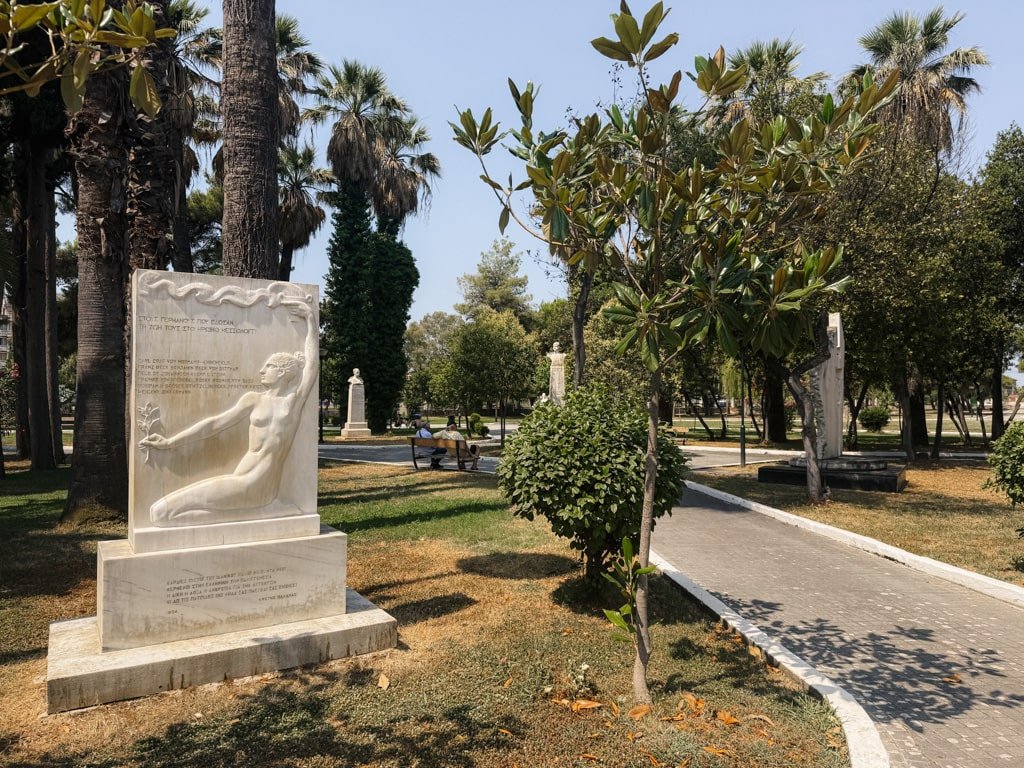
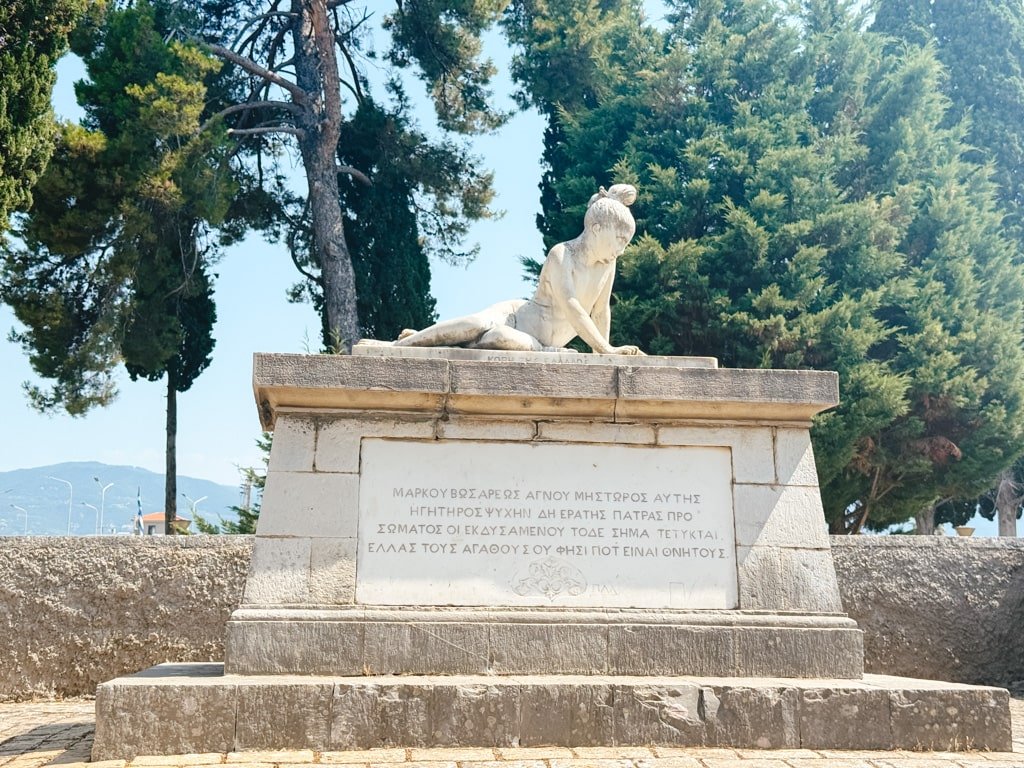
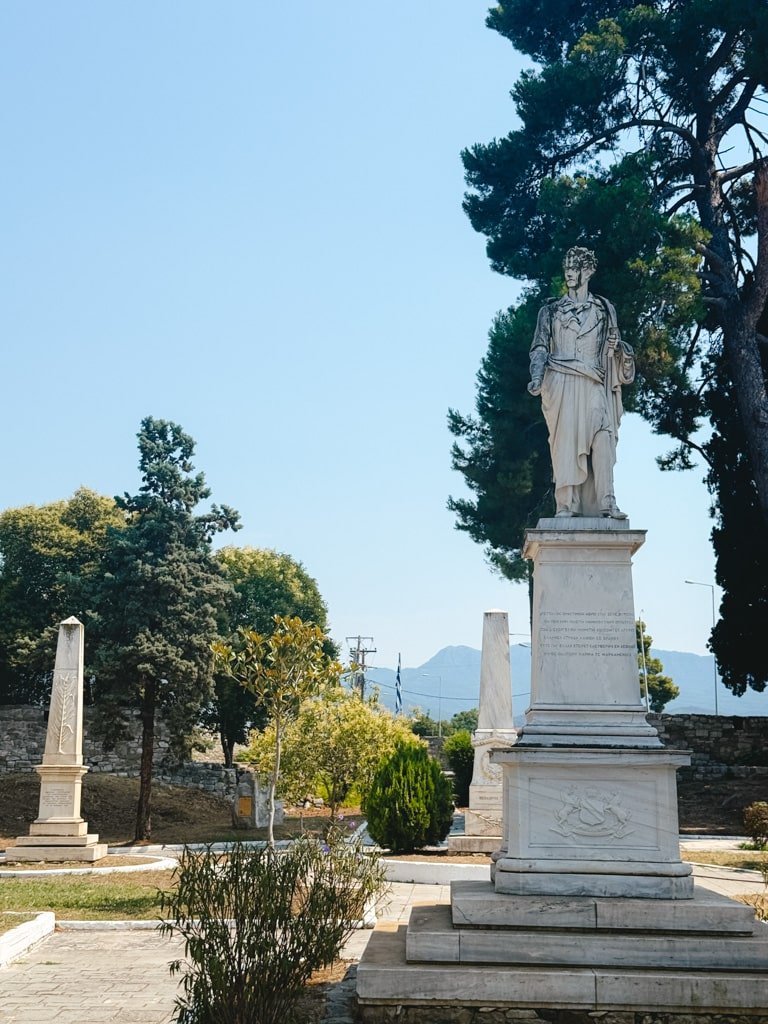
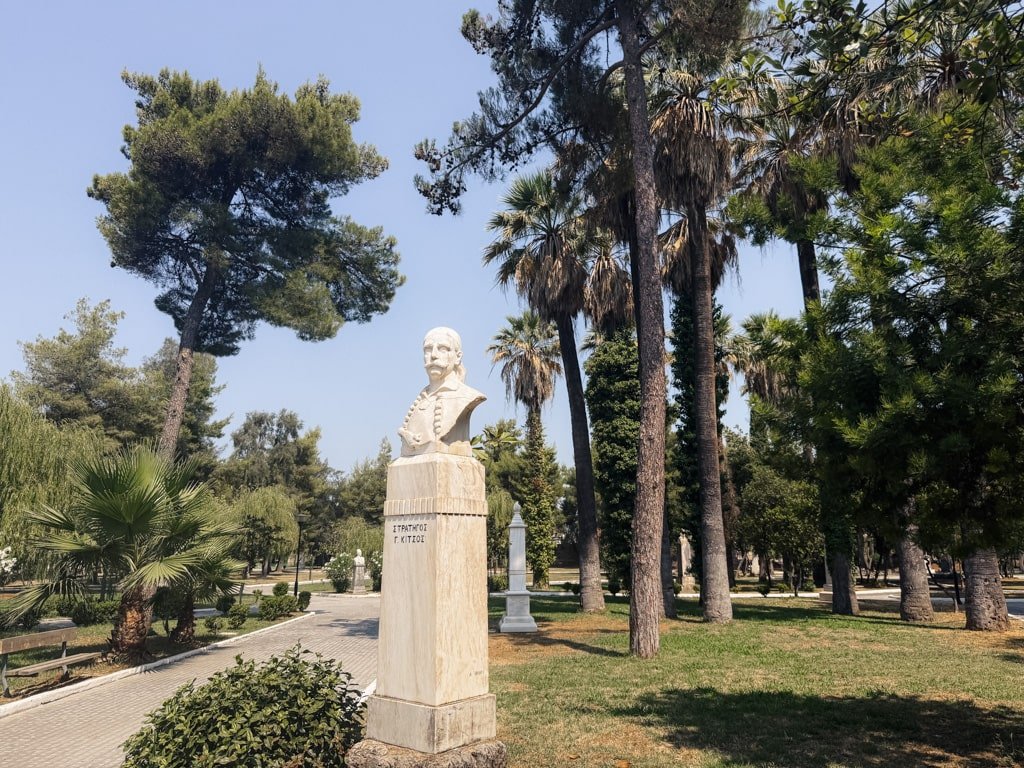
Hit the Famous Beach of Louros
Looking for a proper beach day? Head out to Louros Beach, one of the longest stretches of sand in Greece, around 7 km long. It’s backed by dunes, cedars, sand lilies and even wild horses, all protected under the Ramsar Convention. The shallow water makes it ideal for families and long walks in natural surroundings. Definitely worth the short drive for a full beach experience and a place that I’d like to enjoy properly on a next visit.
Discover the Delicacy of Avgotaracho
Avgotaracho goes hand in hand with salt and water, which feels fitting for a place like Messolonghi. It goes by the names bottarga or “Caviar of the South” as well, and is cured in sea salt and sealed in beeswax. This traditional method preserves both the flavour and the texture, creating one of the most prized delicacies of the region.
I had no idea what actually goes into making it, so I felt lucky to get a tour of the Stefos factory. I got to try several different versions — all in the name of research of course — and it helped me figure out which one I liked best. Their smoked version was incredibly easy to eat, almost like smoked salmon, while the classic variety had a sharper flavour and felt like the real deal.
What stood out wasn’t just the product, but the story. Stefos is a small-scale family business that has grown into an international exporter, and the visit touched on everything from local economy to quality control, ethical sourcing, and how to share the best of what the land gives with a wider audience.
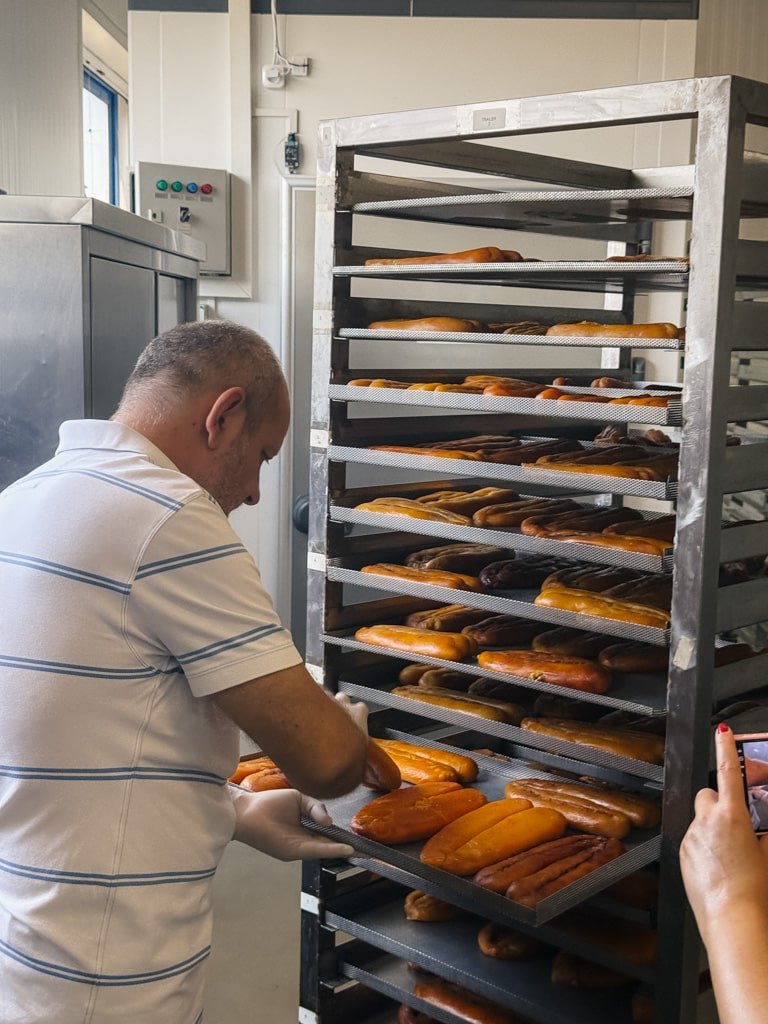

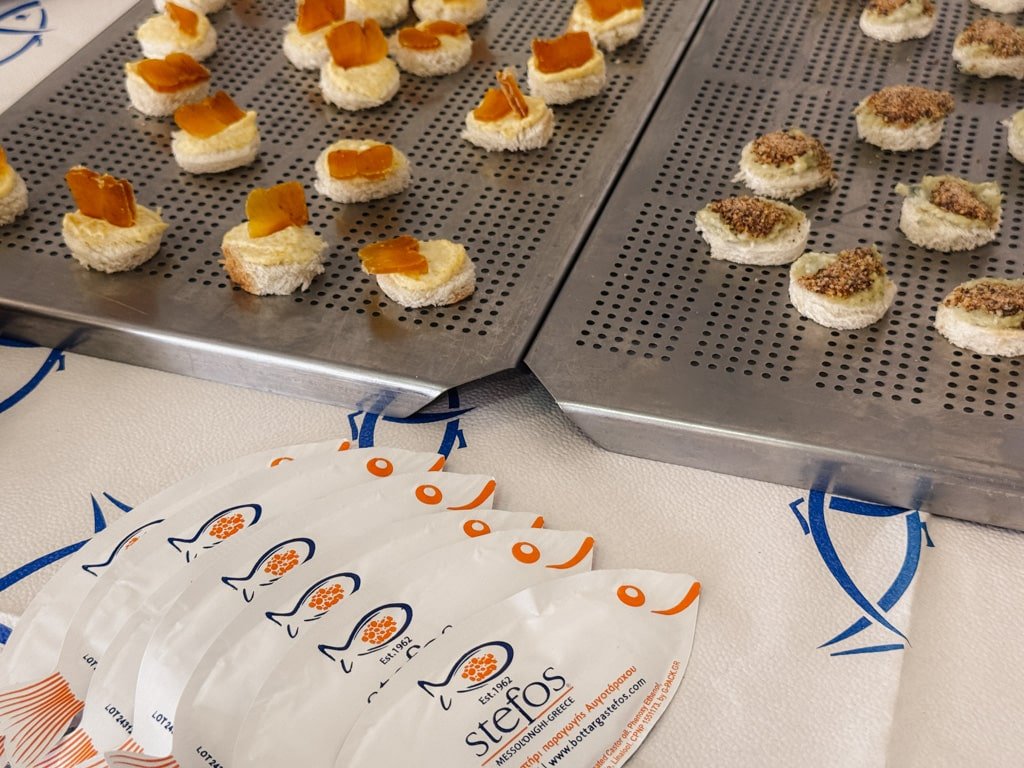
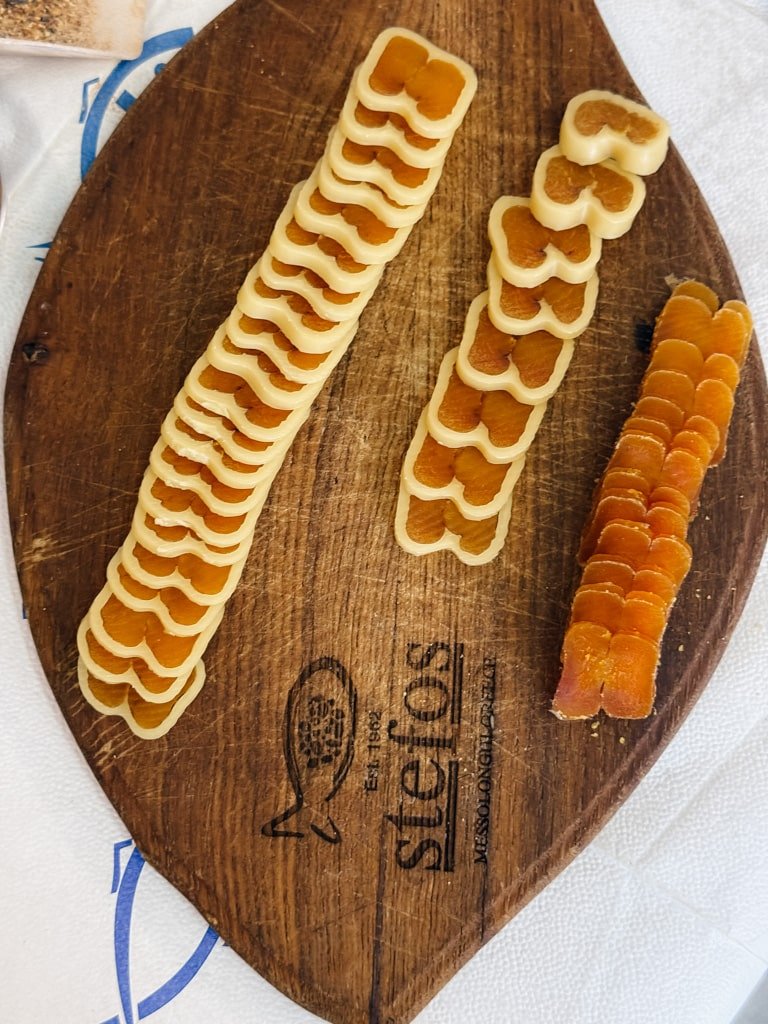
Grab Some Olive Oil and Some Snacks
Olive oil has long been a staple in Mesolonghi and the surrounding region, but today it’s not just about what goes into a bottle. Local producers like Kousolas are taking things a step further, turning the byproducts of olive oil production into something completely new.
Through a process called osmosis, they’ve developed a line of olive-based products that includes vegan, sugar-free snacks, spreads, and even burgers — all packed with nutrients and flavour. These aren’t just novelty items. They’re part of a wider push to rethink how food can be made more sustainable, without sacrificing taste.
Behind the innovation is a respect for the land and the long history of olive cultivation in the area. It’s a modern take on a product that’s been part of Greek life for centuries — and a great excuse to stock up on something genuinely different.

Where to Eat in Messolonghi
Messolonghi may be small, but it delivers when it comes to food especially if you love seafood, meze, and unfussy local dishes made with heart. Here are some of the spots we ate at and what stood out.
Spitiko Fountas
Traditional, local, no-fuss. This is a great place to get your introduction to Messolonghi cuisine. Think grilled meats, fresh salads, and classic appetisers. It’s the kind of family-run place where everything arrives at the table fast, hot, and full of flavour.
The family that runs the place also has a small vegetable garden next door, which is where they get all their salad greens from, and it makes the biggest difference. I think I could have had just a Greek salad and the liver, and I would have been happy. Speaking of liver, make sure to try it, because it is one of the dishes they are known for.
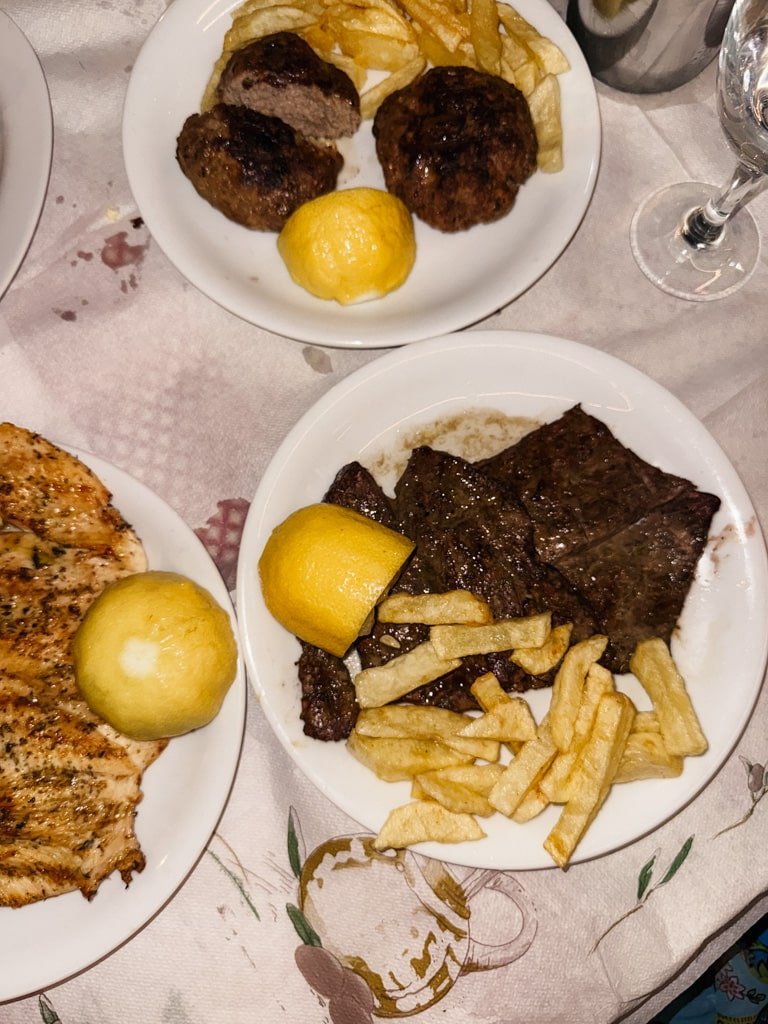
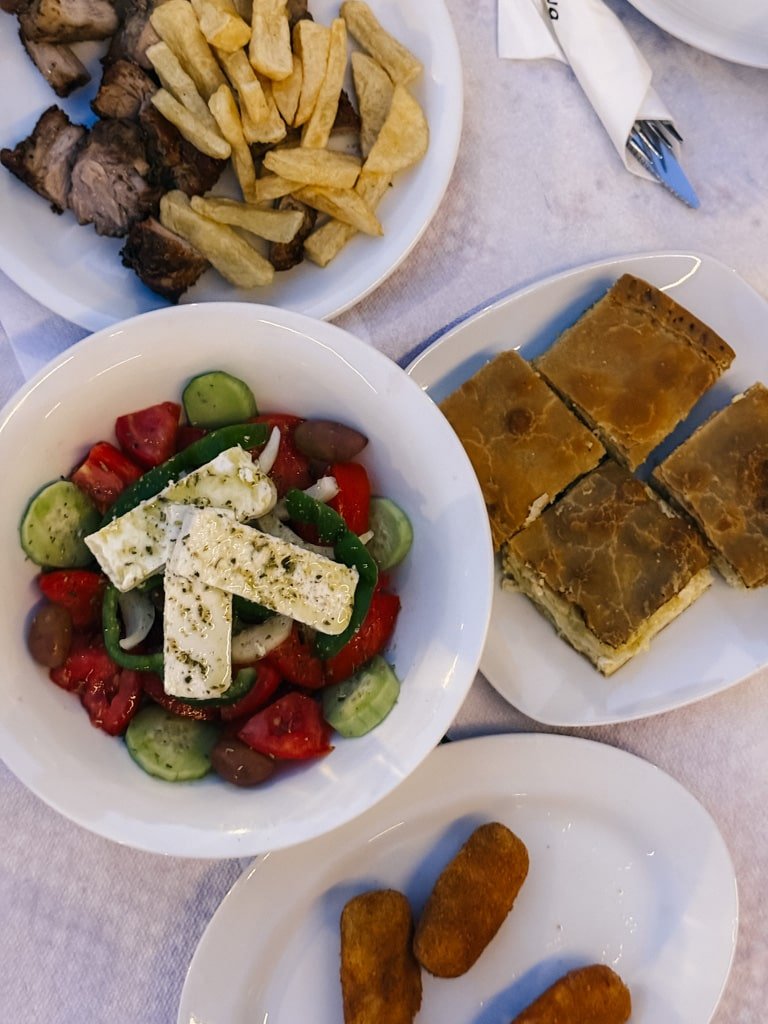
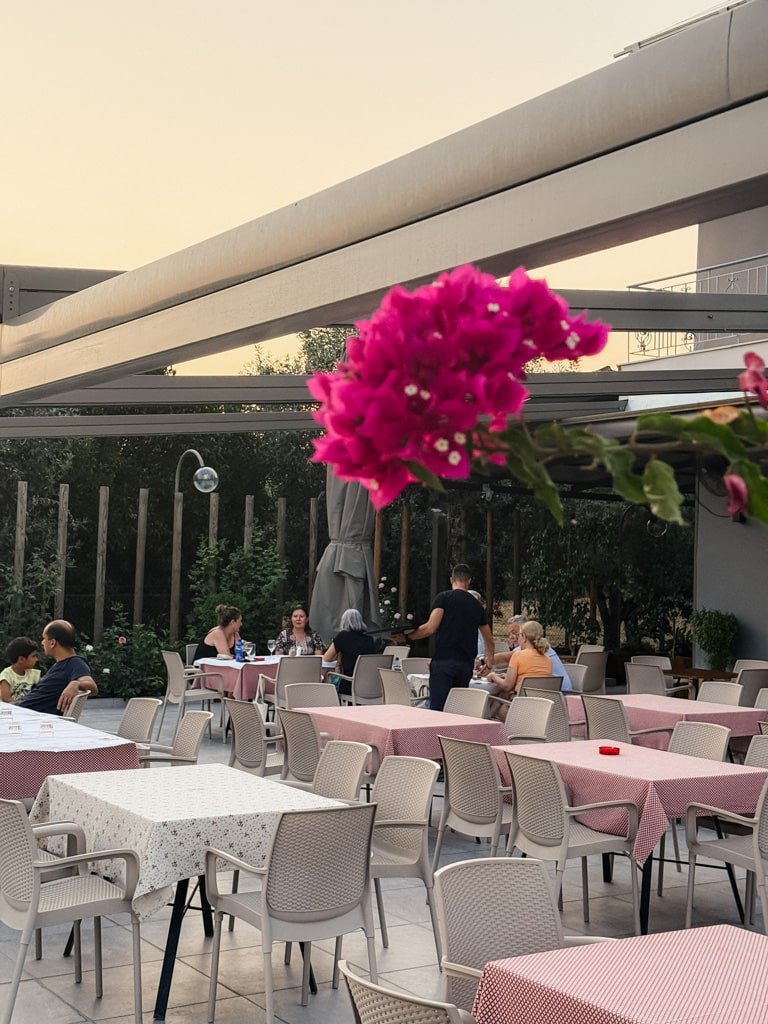
Archontiko tis Persefonis
A more atmospheric setting with old-world charm, Archontiko is where you go for a slower meal. The menu leans traditional with a few updated touches, and it’s a solid spot for lunch if you want something a little quieter, tucked into a side street of town.
Here, what stood out were the eggplant bourekakia and the insanely juicy and flavorful biftekia (meat patties). We tried both the chicken and beef versions, and both were excellent.
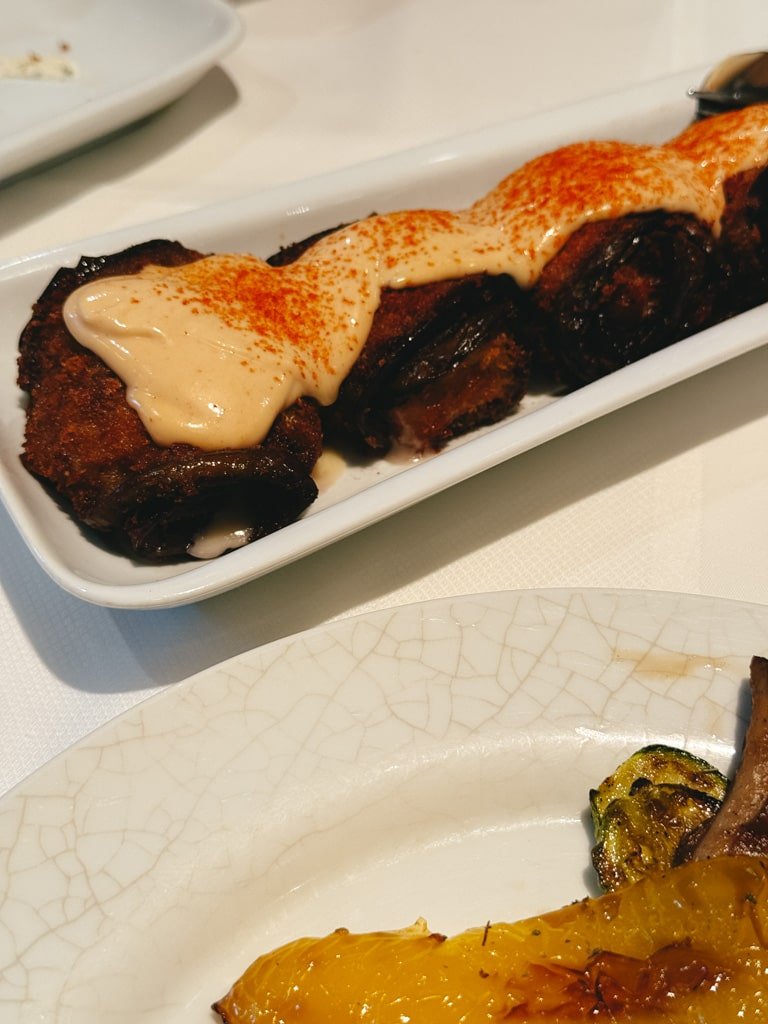
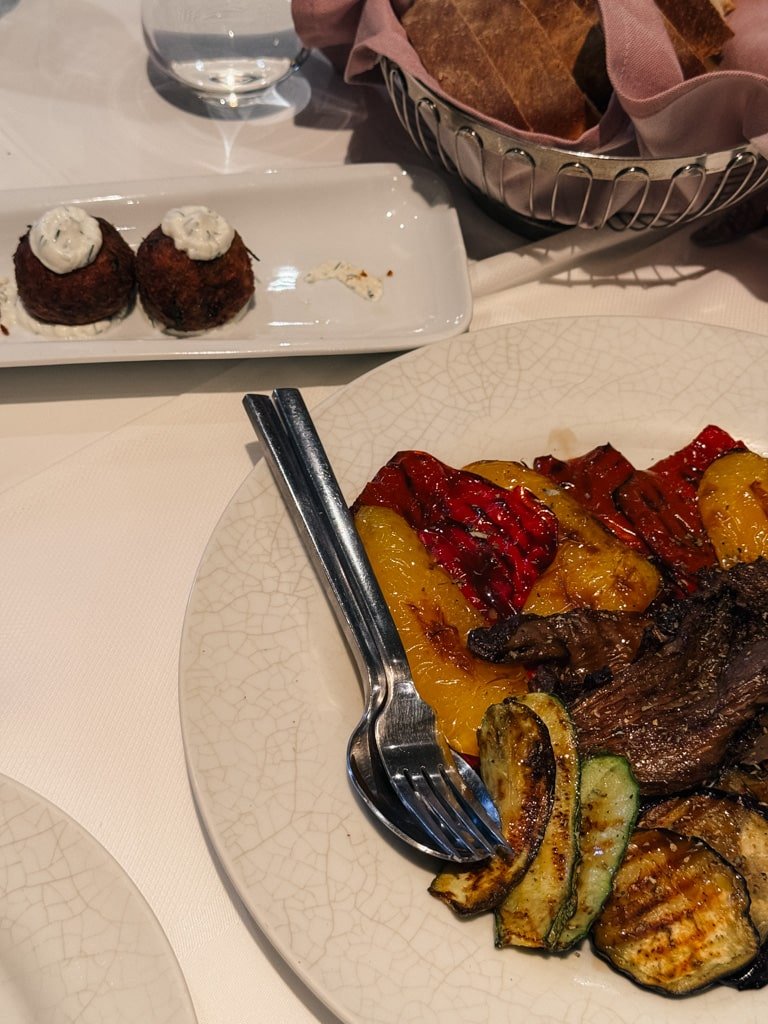
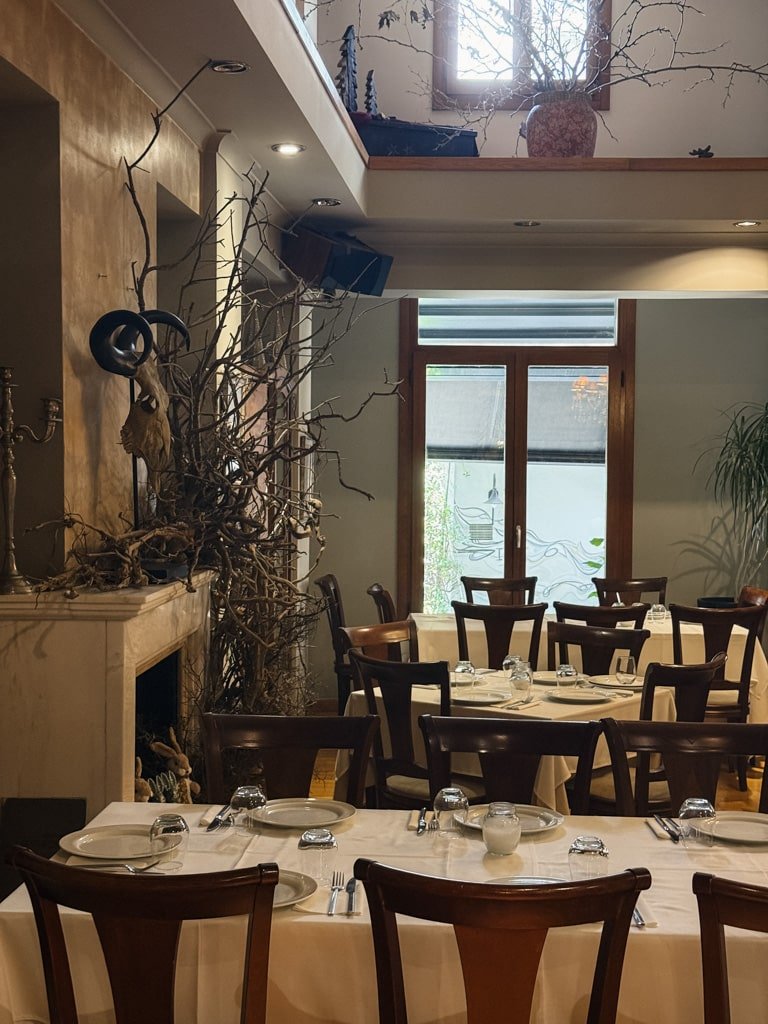
Iliovasilema, Tourlida
This was hands down my favourite spot. We ate here more than once and would have gone back again. Iliovasilema, which means “sunset” in Greek, is right on the water in Tourlida, with tables set along the pier.
Watching the sun drop into the lagoon while eating freshly fried fish, taramas, and local sides was pure magic.
The food is straightforward and fresh — seafood, small plates, and cold drinks — but the setting is what makes it unforgettable. If you’re only going to eat out once in Messolonghi, make it here. Just time it right for sunset.
The atmosphere is upbeat and relaxed, with vintage scooters and posters, colourful tables, and views toward the traditional boats in the small pier.
If there is one thing I would order again and again, it’s the taramas with avgotaraho (bottarga), as well as the pasto, a local kefali fish cured in salt brine with lemon and red pepper. It has a surprisingly buttery, non-fishy taste and makes the perfect meze with local ouzo — but I’d happily eat it on its own, any time.
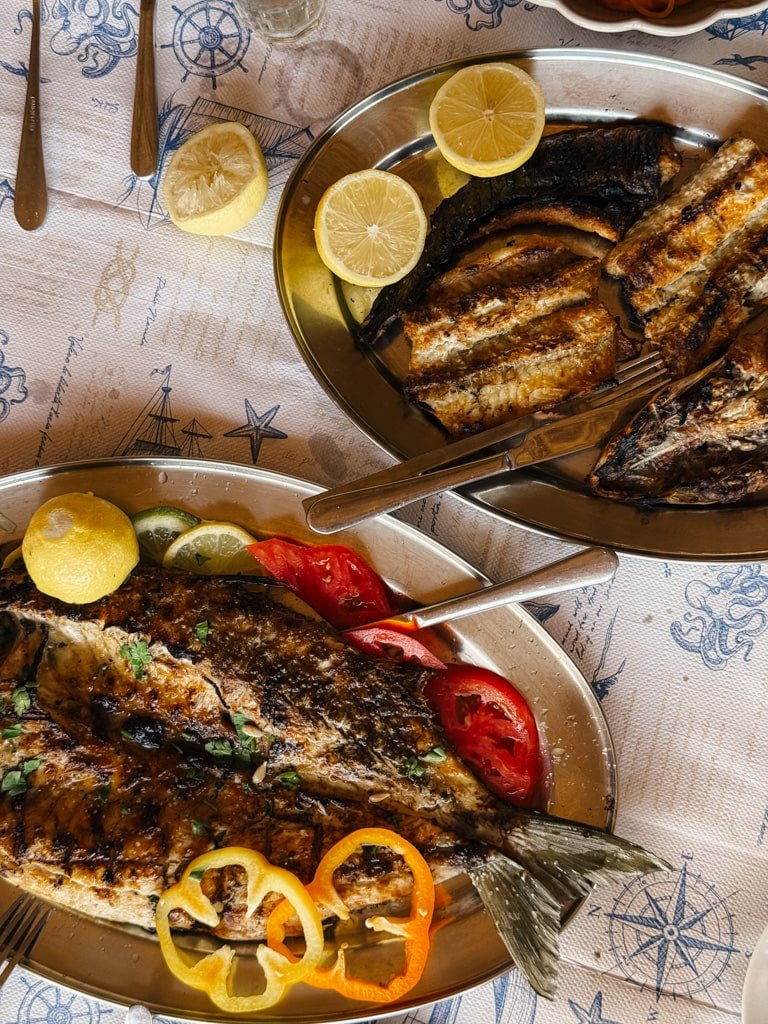
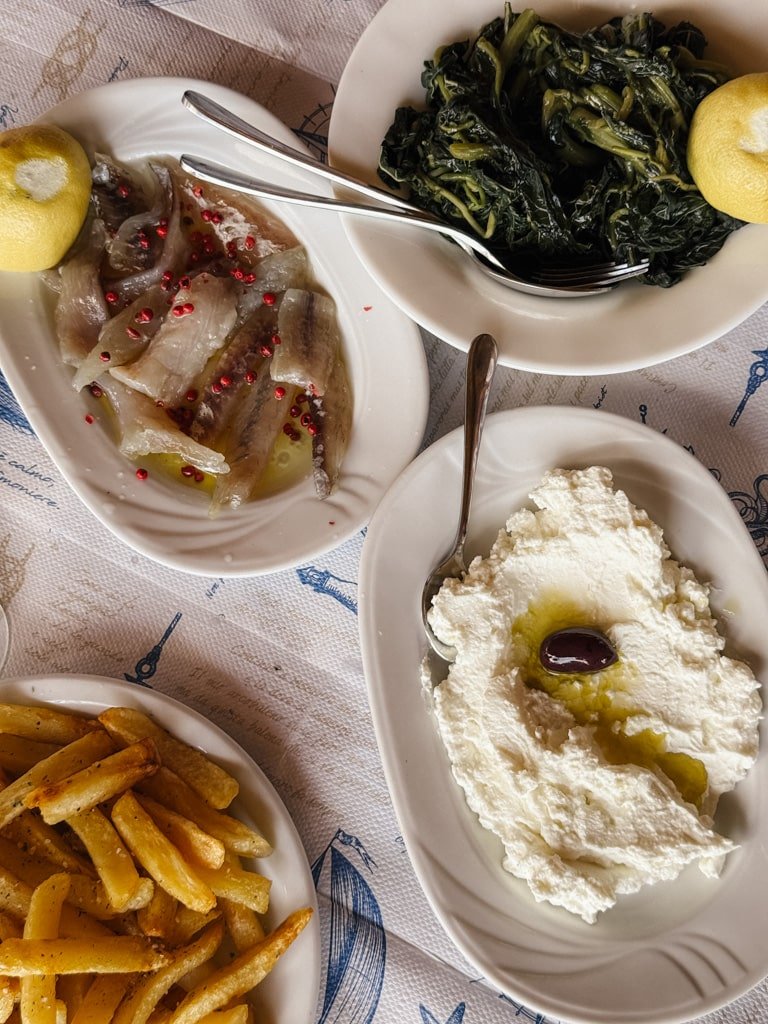
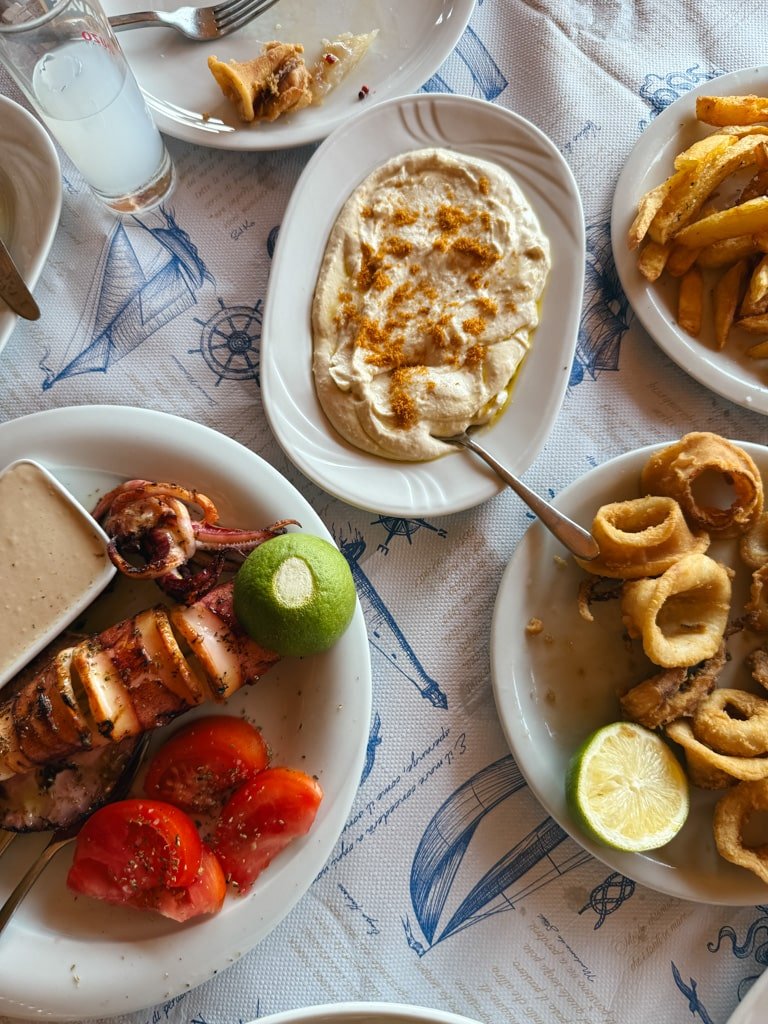
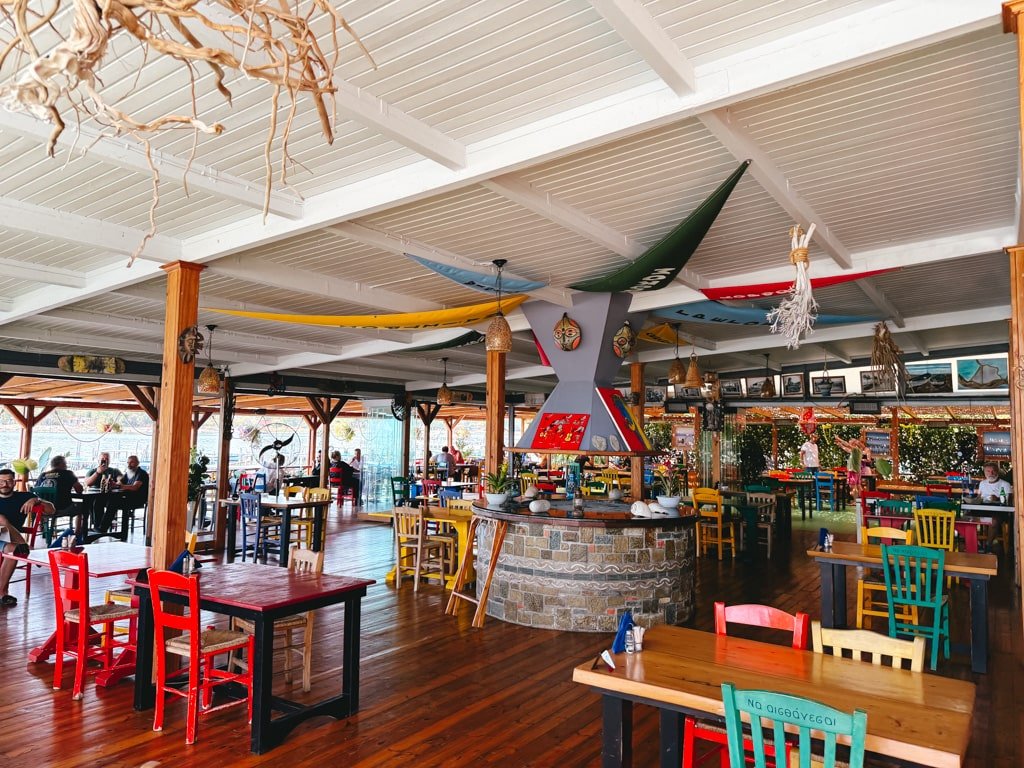
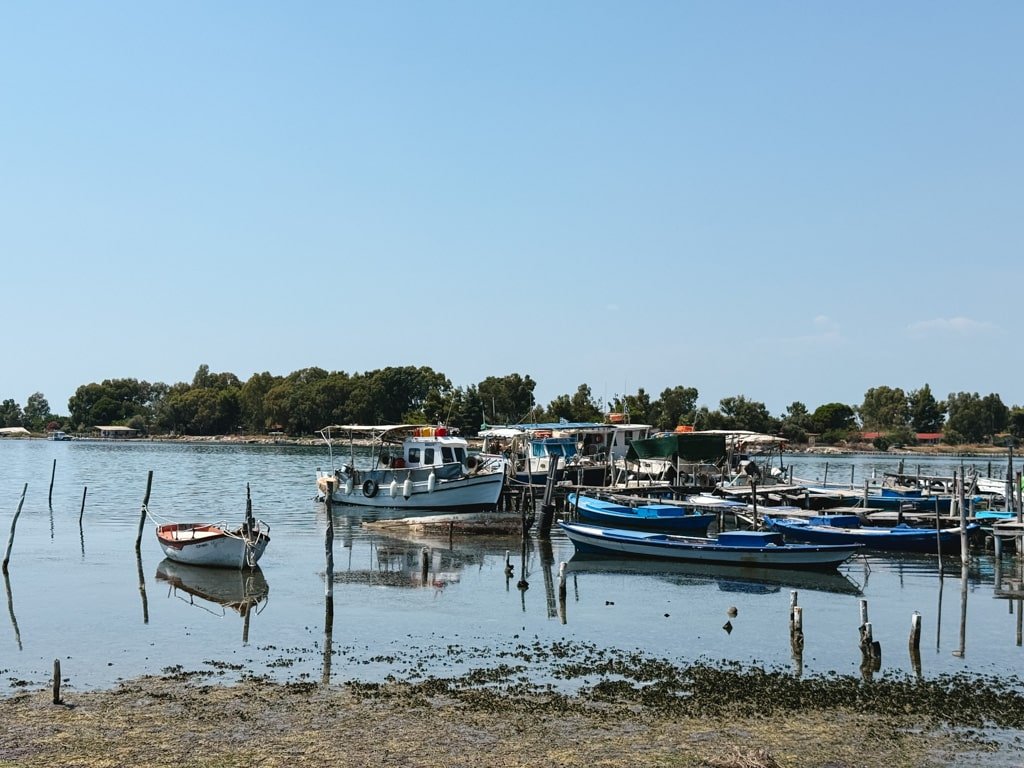
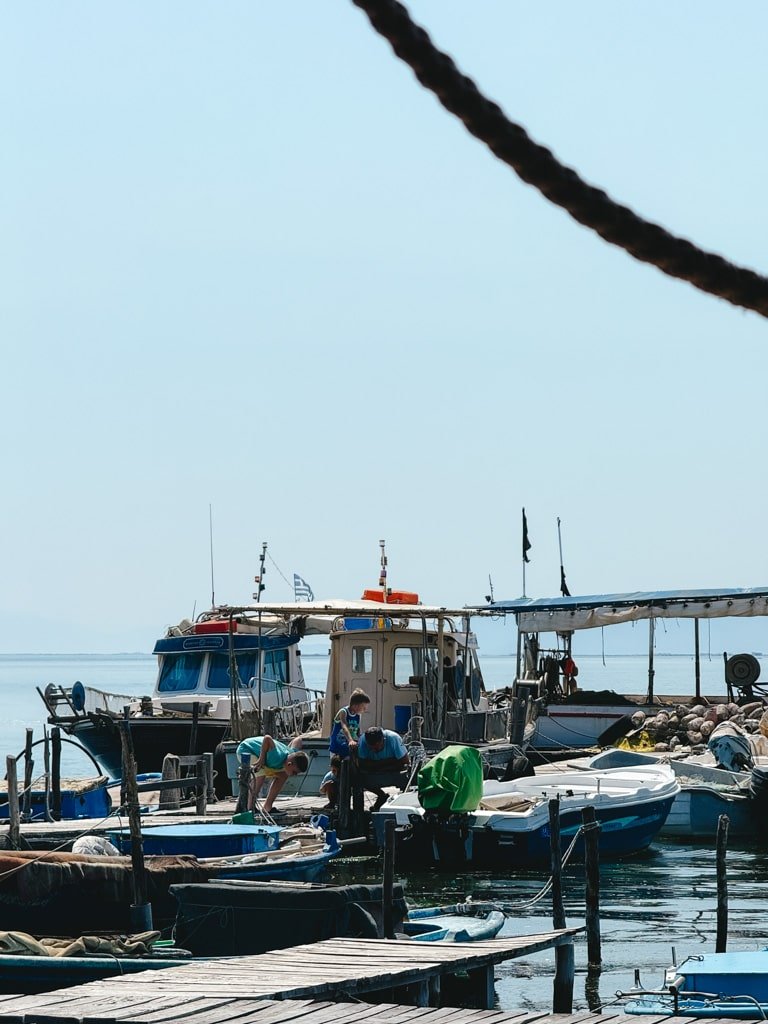
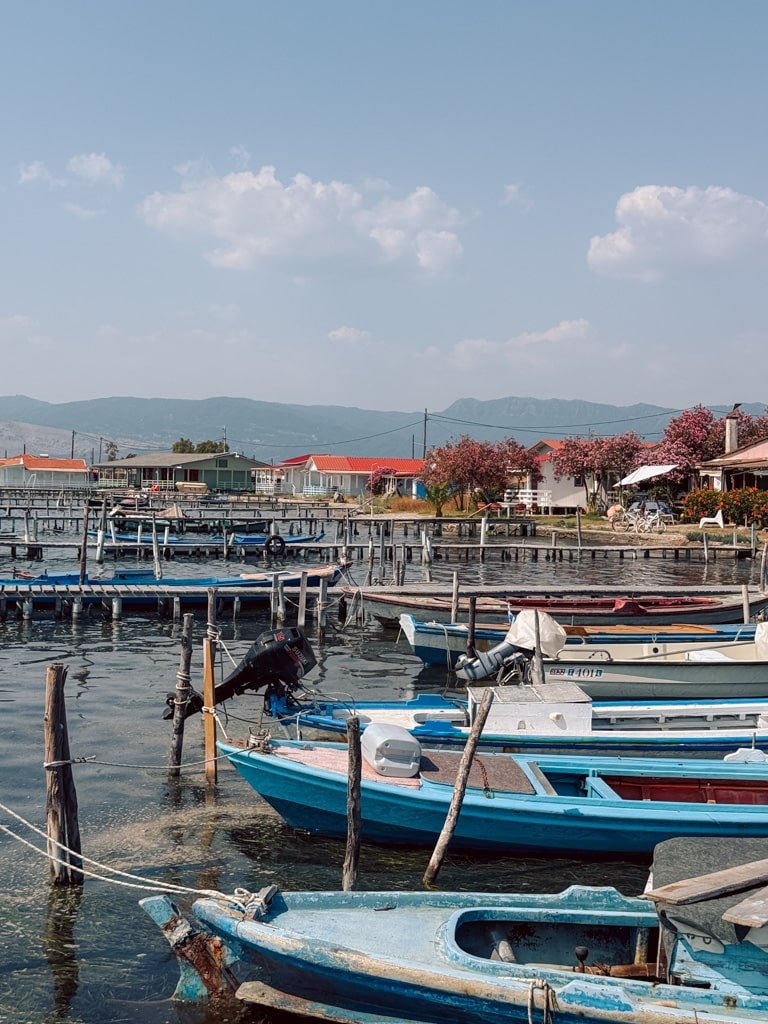
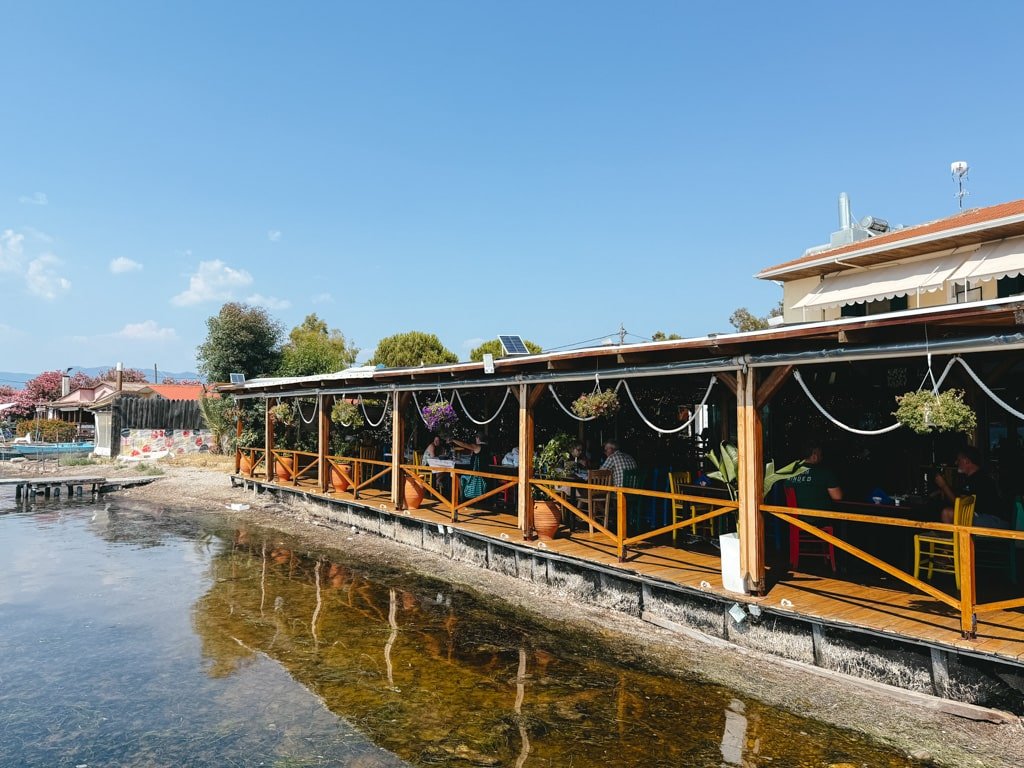
Where to Stay in Messolonghi
If you’re looking for a comfortable, family-friendly place to stay in Messolonghi, Socrates Organic Village is a solid choice. It’s clean, laid-back, and run by a local family that has been a strong advocate for eco-tourism in the region.
The property has several pools, making it easy for families to relax without feeling crowded. There are also fruit trees around the grounds, and guests are welcome to pick what’s in season. A small greenhouse area is being updated, and there are a few farm animals including chickens and hens. The family dogs are also around and very friendly.
Breakfast is homemade and kid-friendly. You’ll find things like tiganites (Greek version of mini pancakes), pies, cakes, and fresh yoghurt with local marmalade. One highlight for little ones is the chance to collect fresh eggs in the morning — a fun activity if you’re an early riser. The orange marmalade was exceptional, I couldn’t stop eating it.
There’s also a well-equipped gym, a sauna, and a spa facility. Everything was spotless and better maintained than many larger hotels.
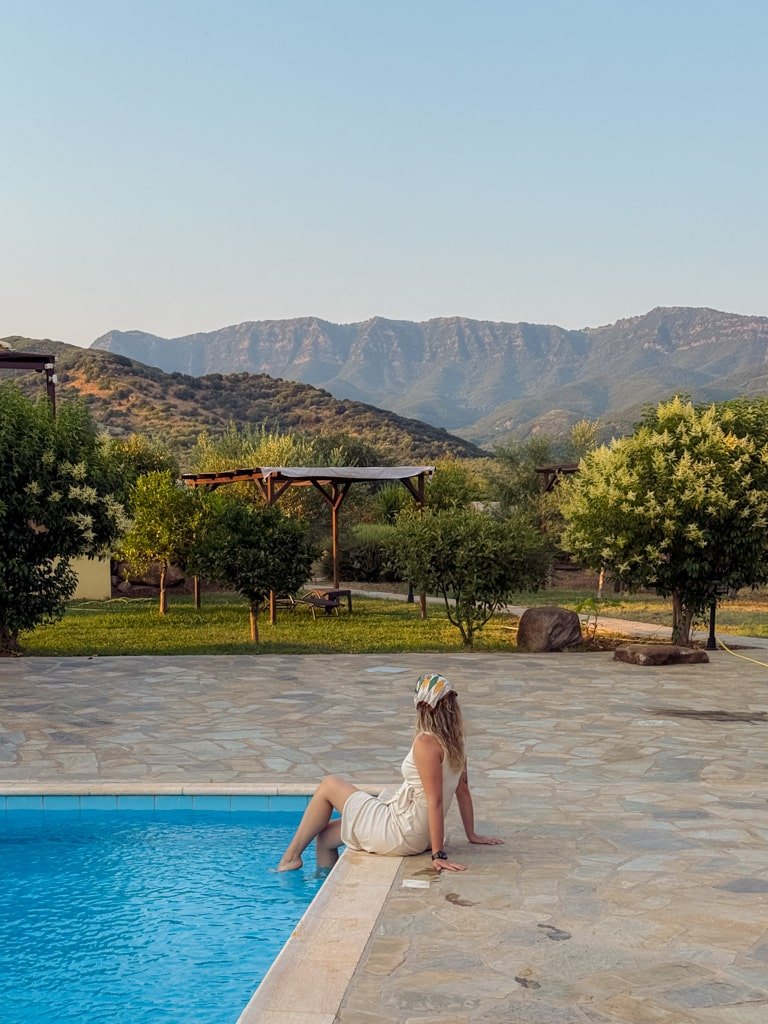

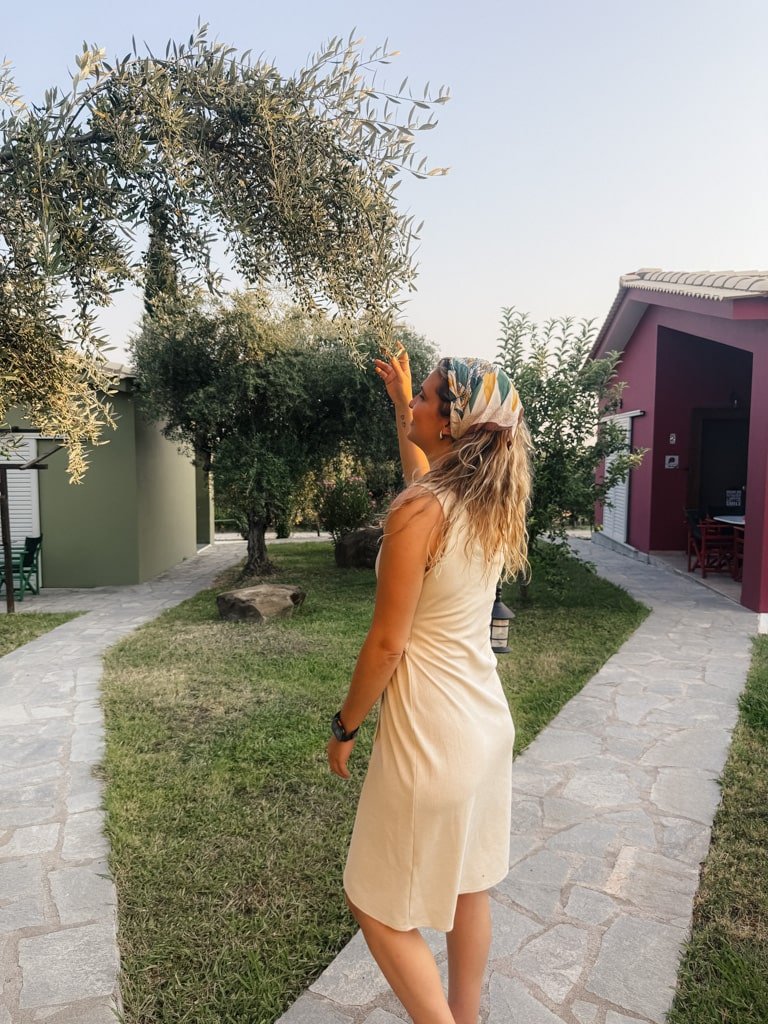
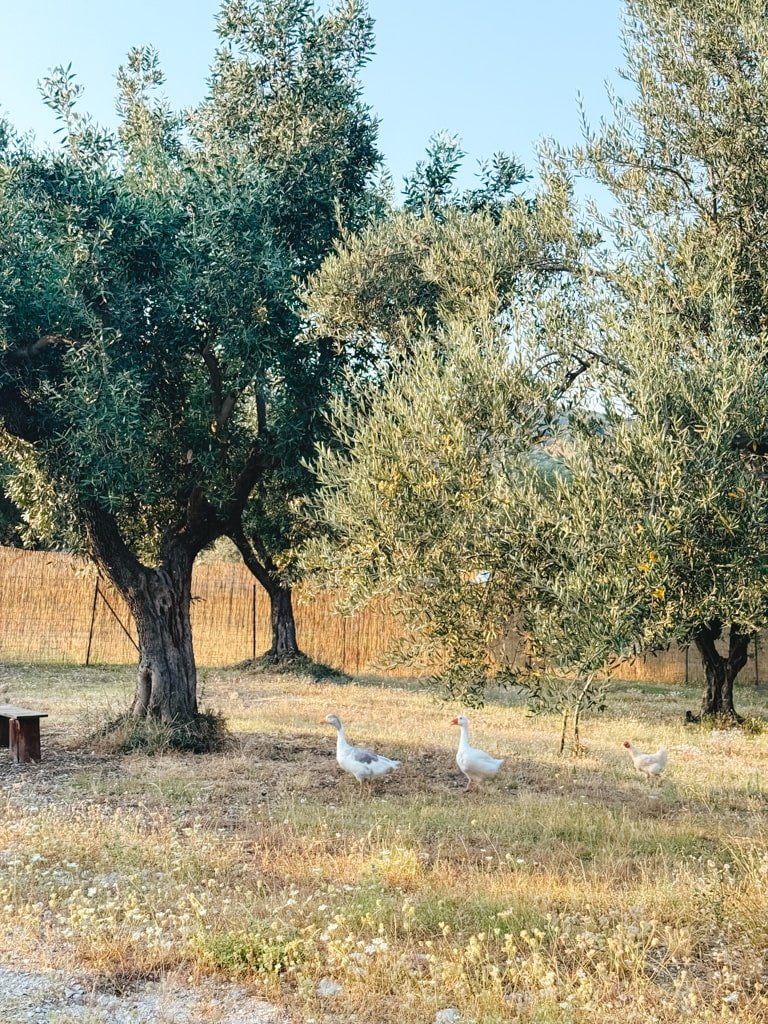
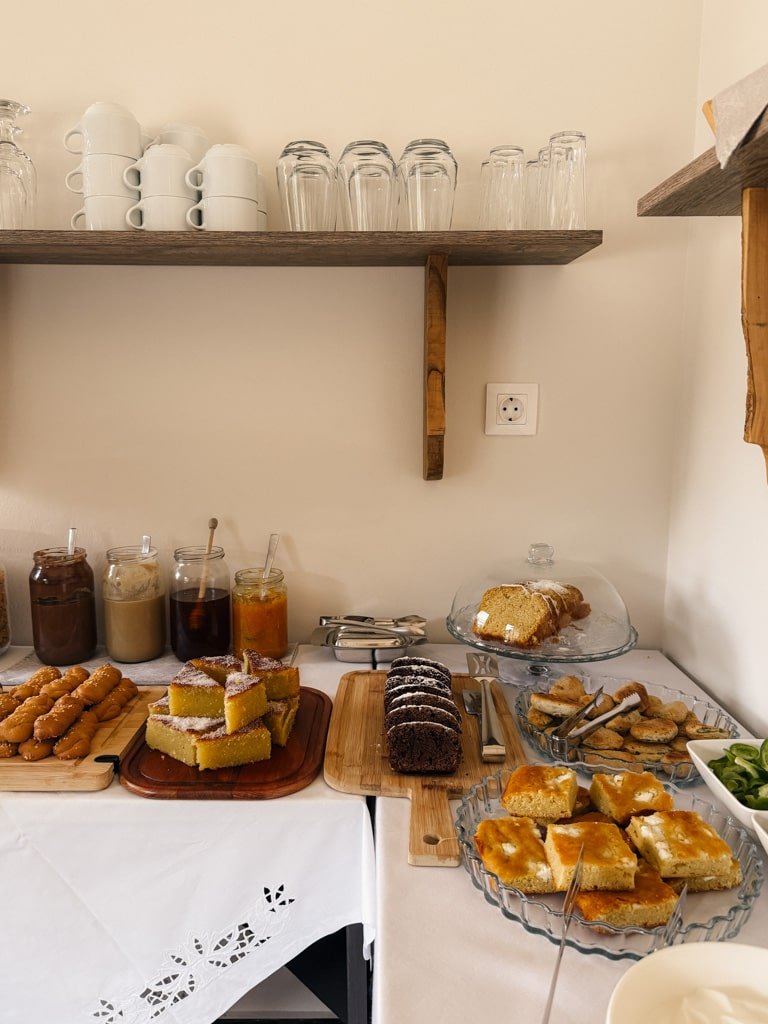
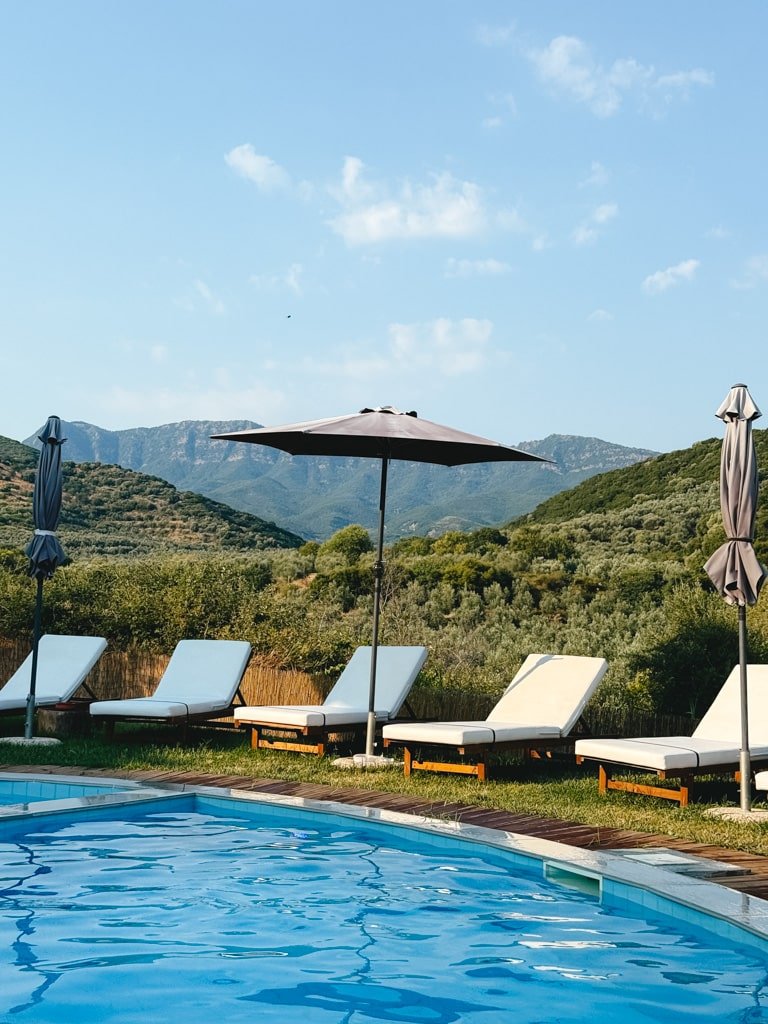
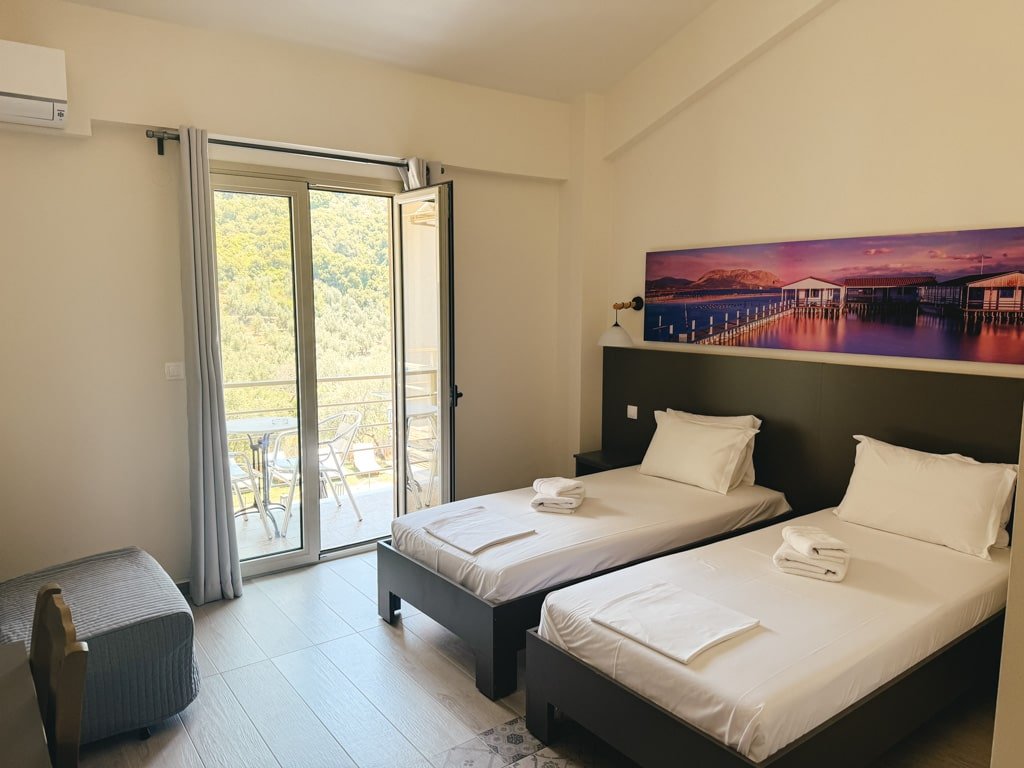
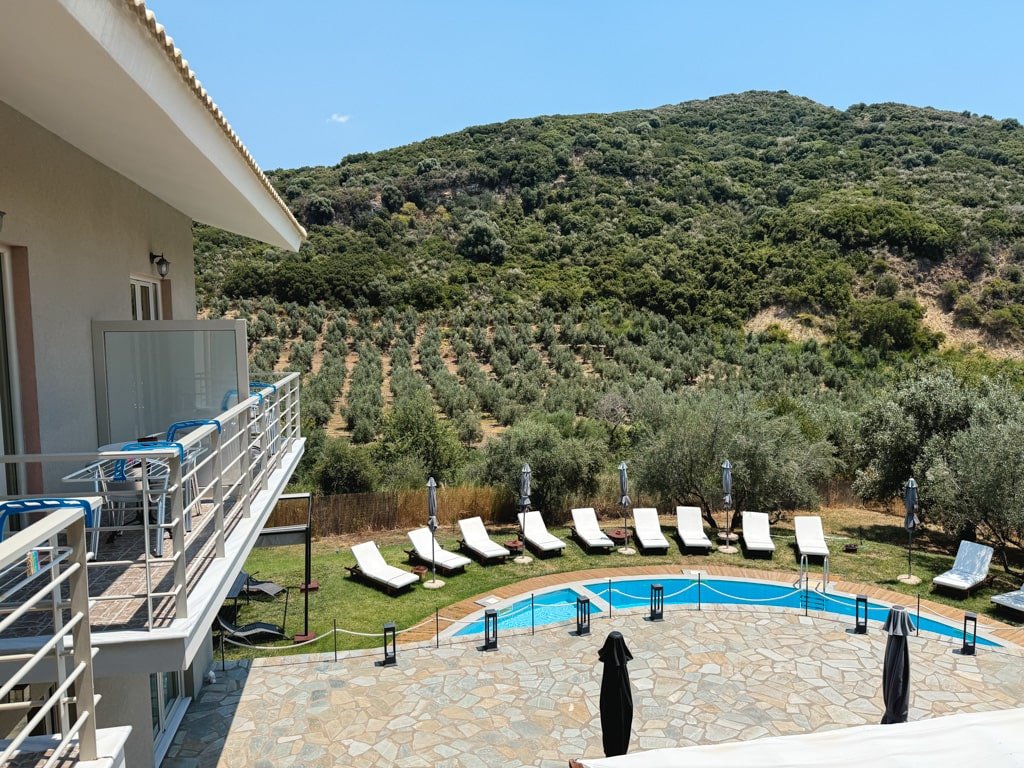
*I was invited to experience Messolonghi together with Travel Bloggers Greece by BioEffect Greece. All views and opinions expressed are always my own.💘
Additional Reading and Resources on Messolonghi and Related Themes
Travel is about learning and expanding your understanding of the world, right? Right!
With that in mind let’s check out some resources you can use.
Books
GREECE: Biography of a Modern Nation by Roderick Beaton
- I recommend this book to absolutely everyone. It touches on so many important themes that make Greece better to understand for people. From the legacy of the ancients to the marketing rejuvenation of Greece after Ottoman occupation, to now, this book presents facts and ideas that have shaped how Greece is now, culturally, politically, and religiously.
- If you are looking for insight on Messolonghi specifically, you can’t miss this book that covers the Greek War of Independence and the political issues that led there.
Central Greece Travel Guide – Lonely Planet
- Lonely Planet guidebooks hold a certain appeal. Whether it is for browsing during a trip, before or after.
“Lord Byron: The Major Works” (Oxford World’s Classics)
- An insight at the Romantic poet who died in Messolonghi and became a symbol of philhellenism and Greek independence.
“Salt a World History” by Mark Kurlansky
- While not about Messolonghi specifically, this book offers rich global context for understanding the cultural and economic power of salt — a perfect companion after visiting the Salt Museum.
Videos
A two-part series that dramatizes the life of Lord Byron, poet, rebel, and romantic — before his final journey to Messolonghi during the Greek War of Independence. A compelling watch to understand his legacy in Greece.
Local Documentaries
- There are a few Greek production short movies that have received awards, but are hard to find, including
- IODINE. Greece on the Ruins of Missolonghi
- The Exodus of Messolonghi by ERT documentaries (unfortunately only in Greek)
ESSENTIAL INFORMATION
Must Know When Visiting Greece
- Emergency: Dial 112 for all emergencies. For police, dial 100. For ambulance 166. For fire dial 199.
- Language: English is widely spoken in most tourist areas. Common phrases to learn are “Kalimera” (Good morning), “Yia” (Hello and Bye – informal), and “Efharisto” (Thank you).
- Water: Tap water is safe in Athens, mainland Greece and a small number of islands. Always ask beforehand.
- Driving: Right-hand side, international driving permit recommended. Book your rental car with Discover Cars for the best rates and comparisons across all major and local companies.
- Accommodation: Booking.com for the most options on hotels, apartments and hostels. Free cancellation in a lot of places and no need to pre-pay. Great for their rewards points system.
- Islands: There are a lot of islands, spread out around the country. Start with a map or ferry service to get an idea of travel times. Ferry Scanner is the best for ferry bookings to the Greek islands.
- Activities: From cultural sights to day trips, food tours and city guides, use Get Your Guide.
- Public Transport: For Athens, use the Athens Metro. If you are not renting a car, use Trains (Hellenic Train) or KTEL (Public Buses) services.
- Domestic Airlines: The main airlines for air travel are Aegean Airlines and Sky Express. I recommend Aegean Airlines and its rewards program.
- Taxi: Always use a taxi app, instead of flagging down a taxi from the road. Use FREE Now (formerly BEAT).
- Culture: A siesta nap is still common in less touristy areas. This also means businesses will close between 2 PM – 5 PM. Except for hospitality businesses, everything is closed on Sundays.

